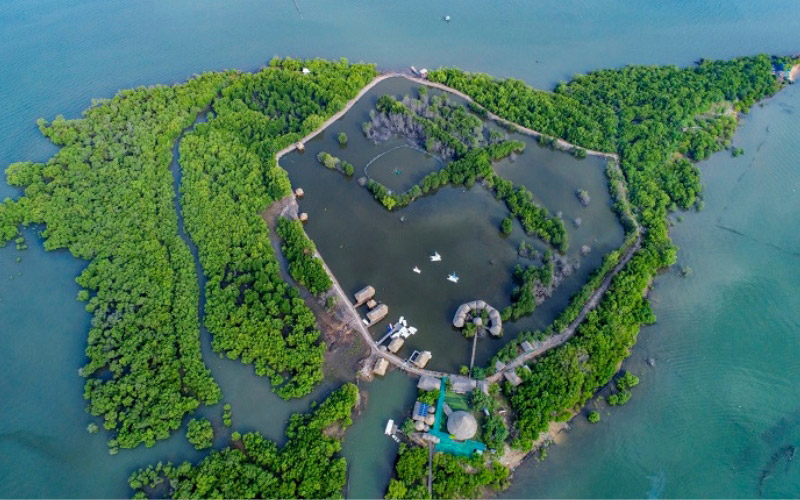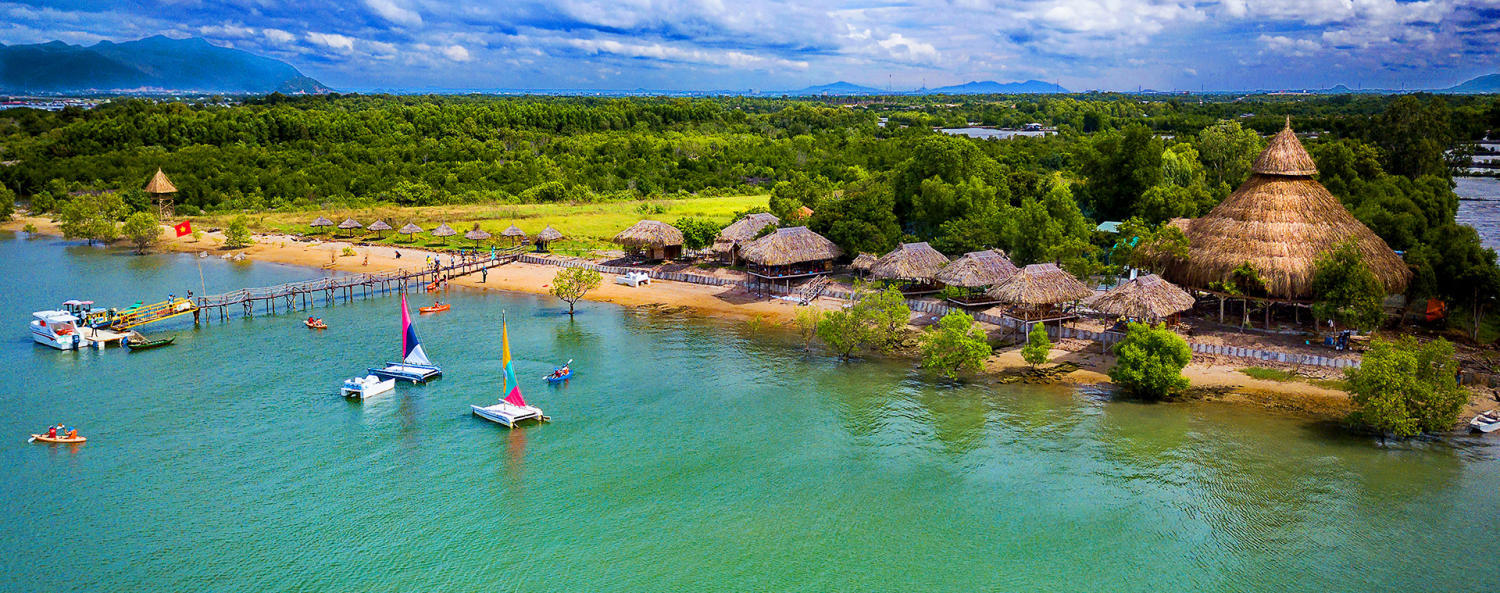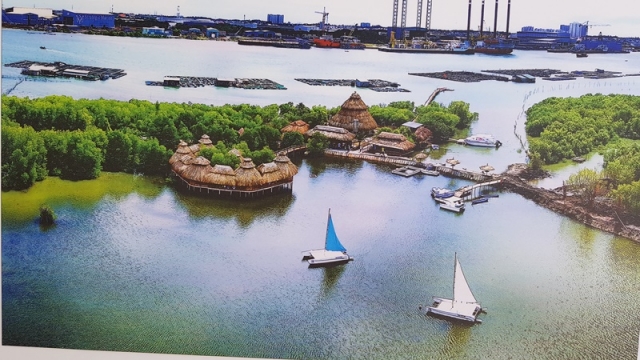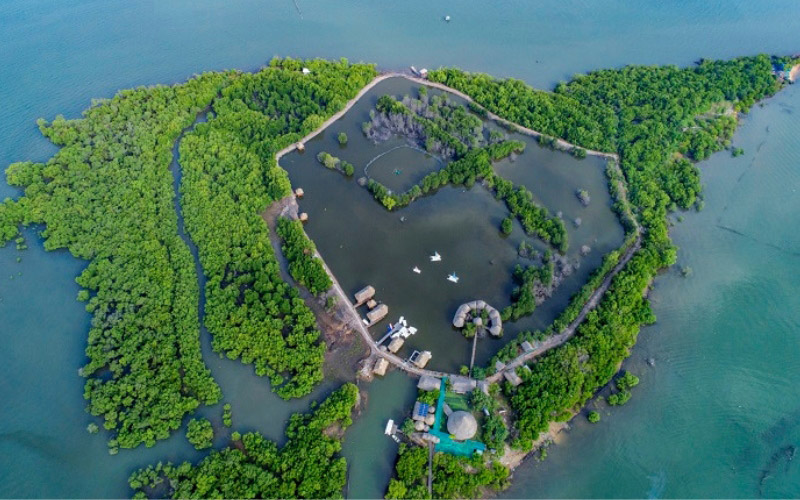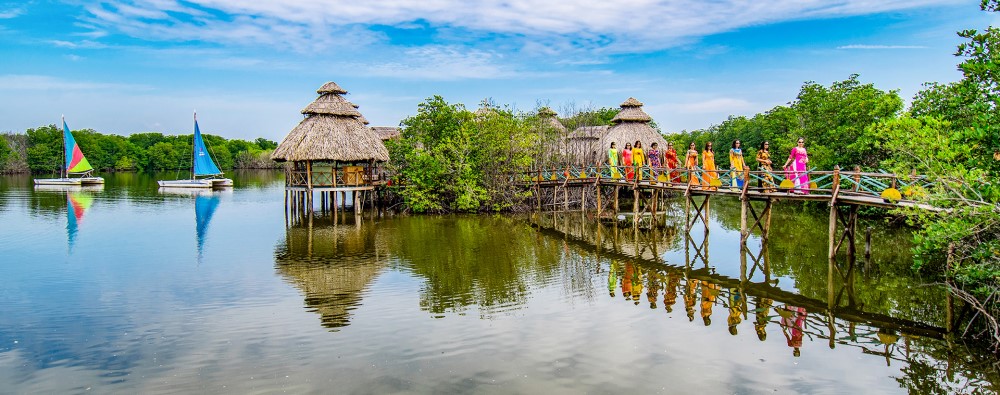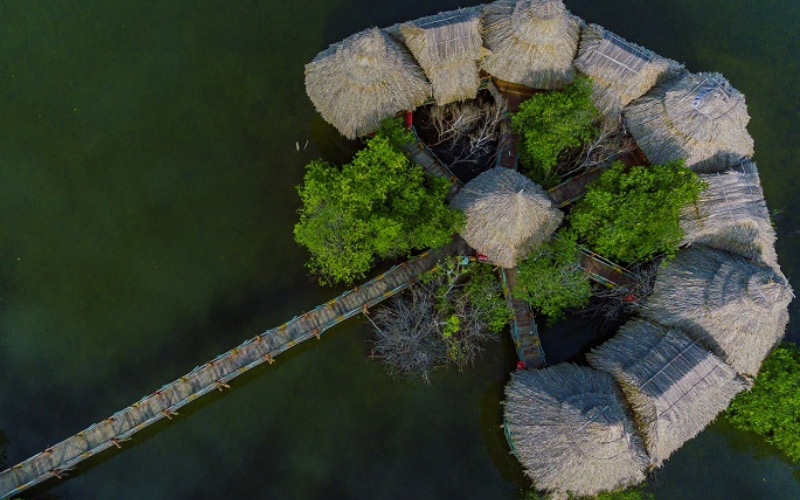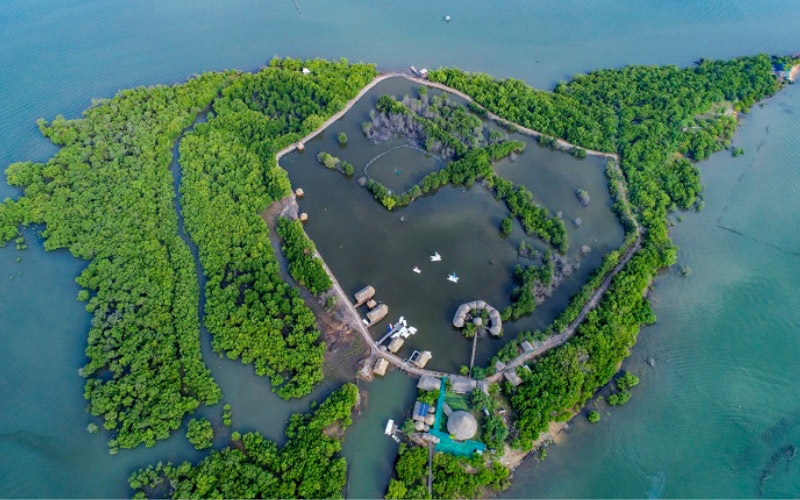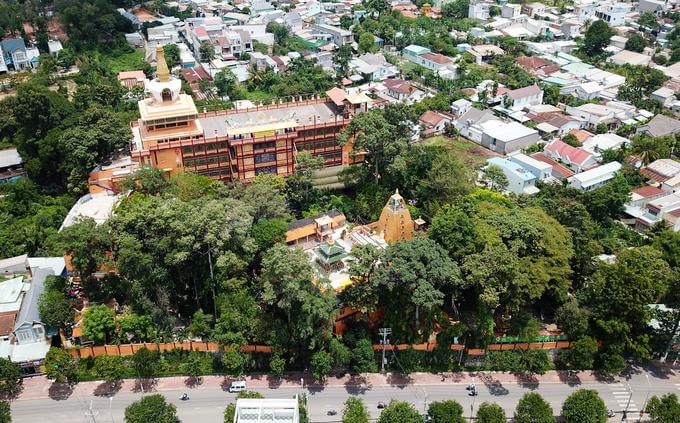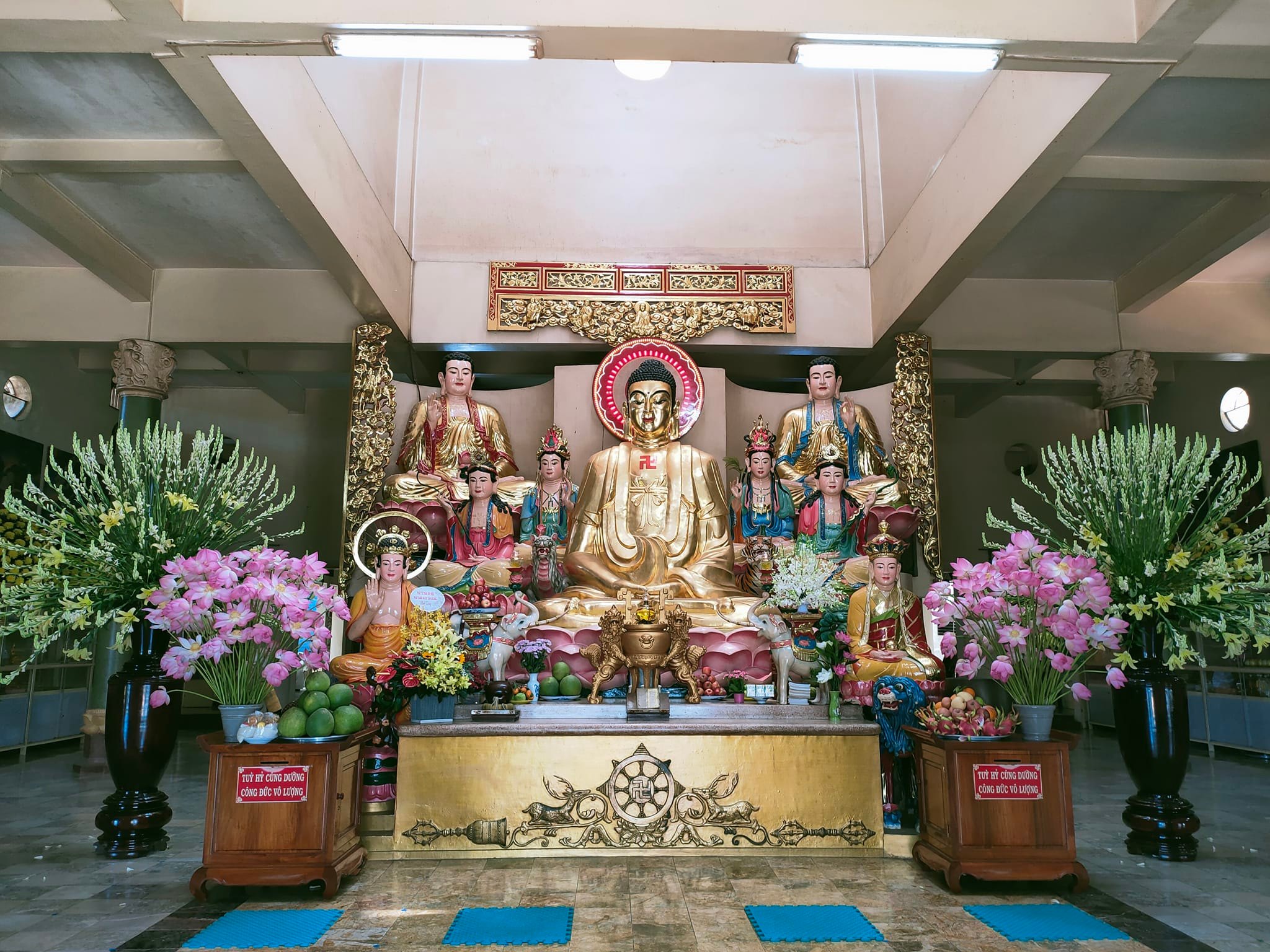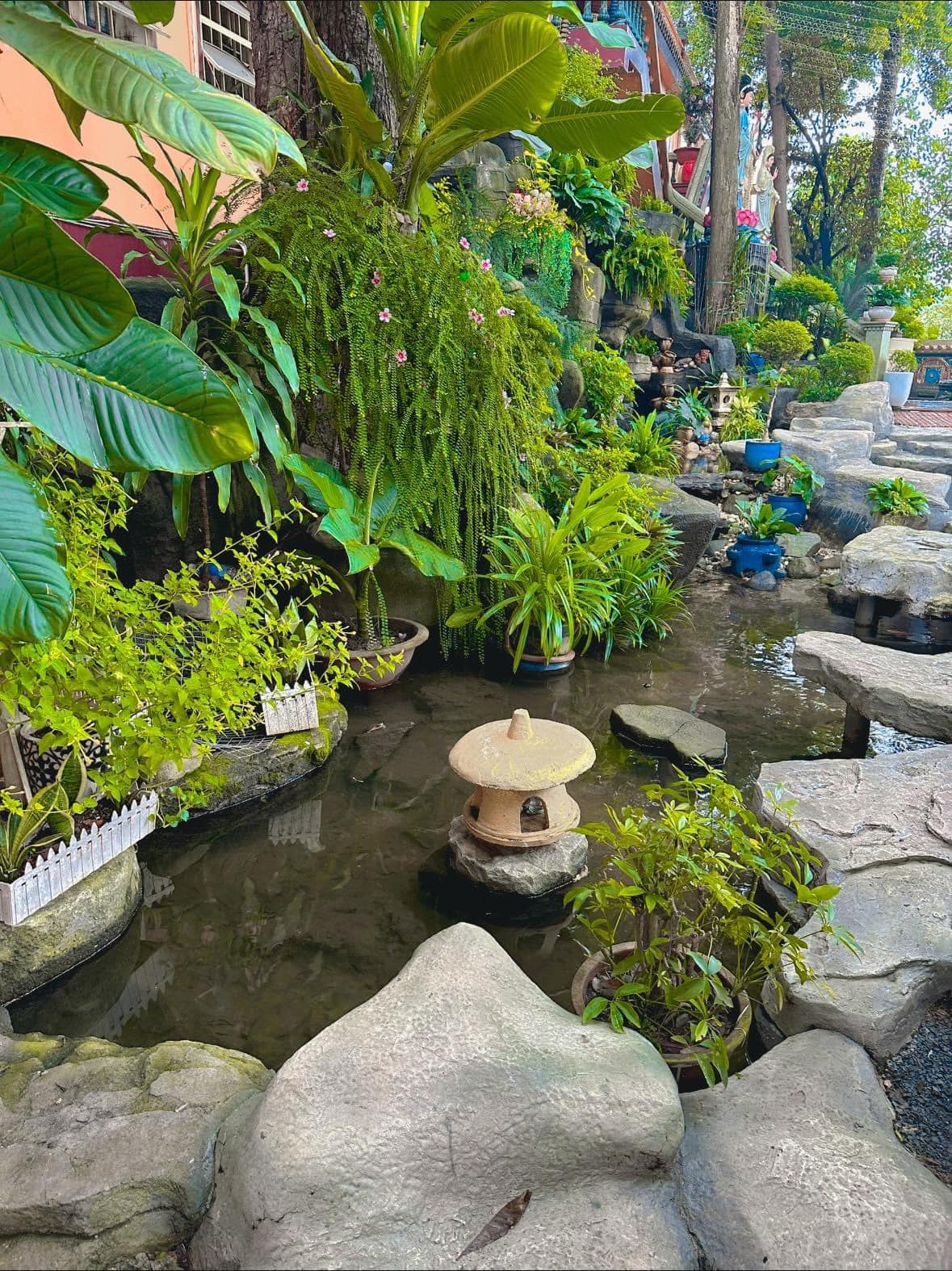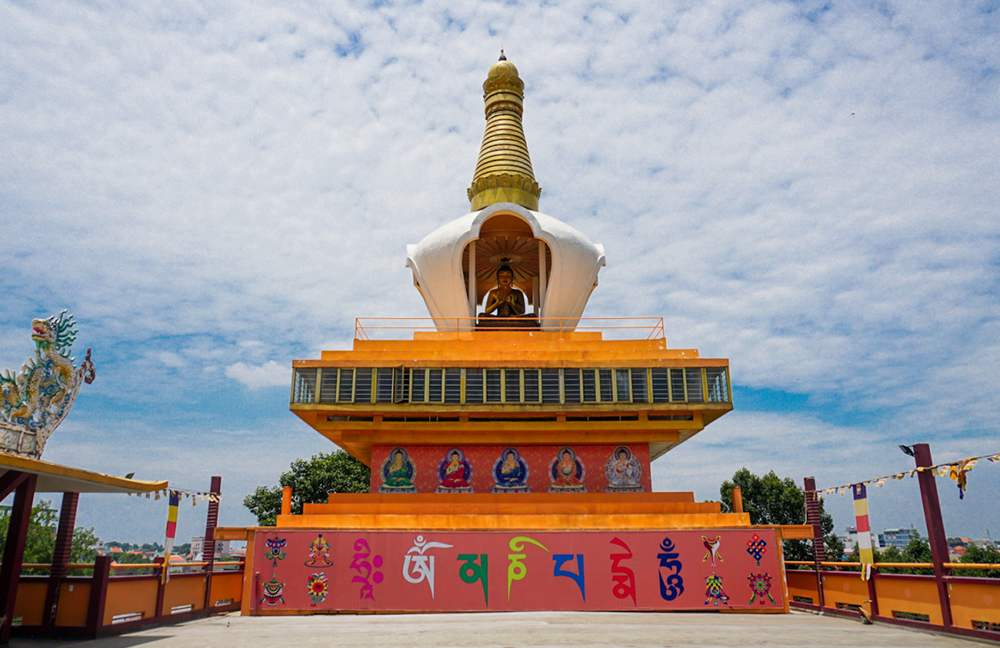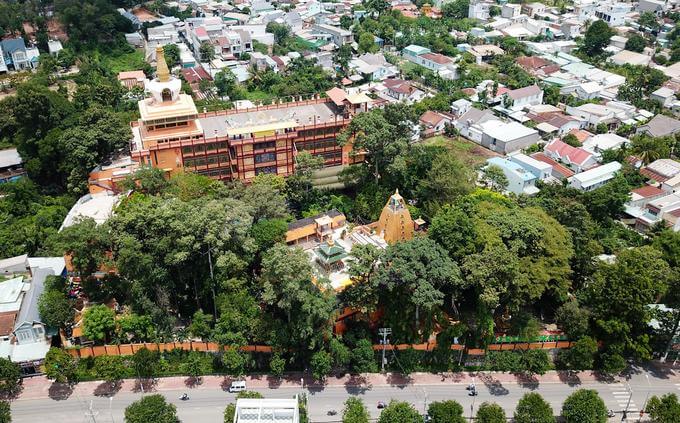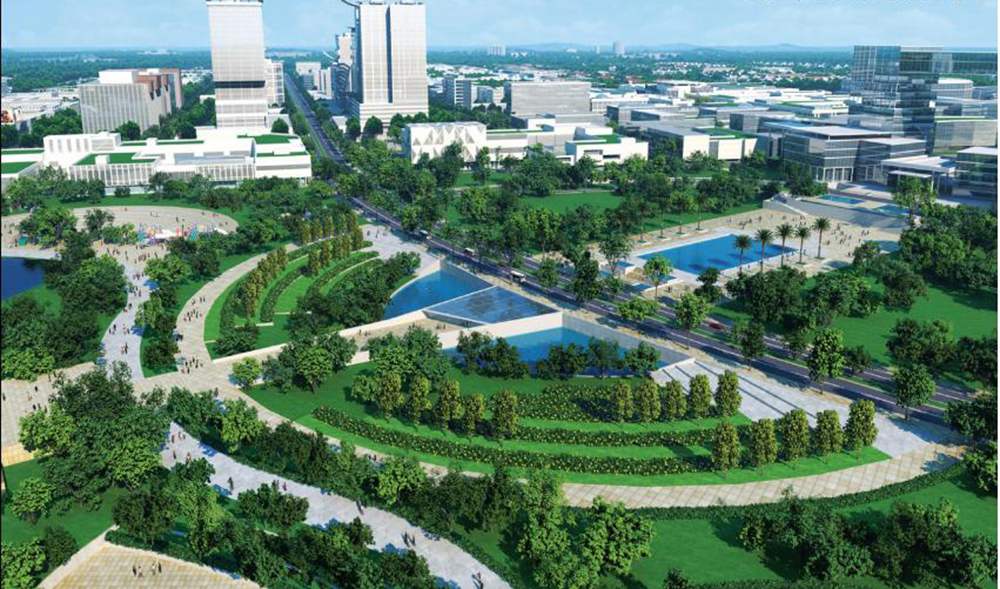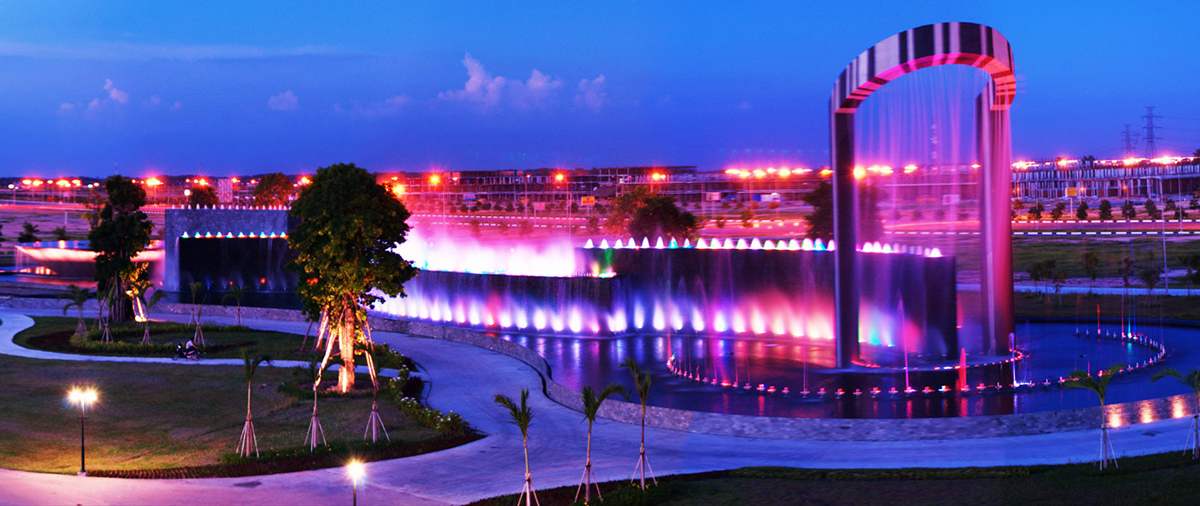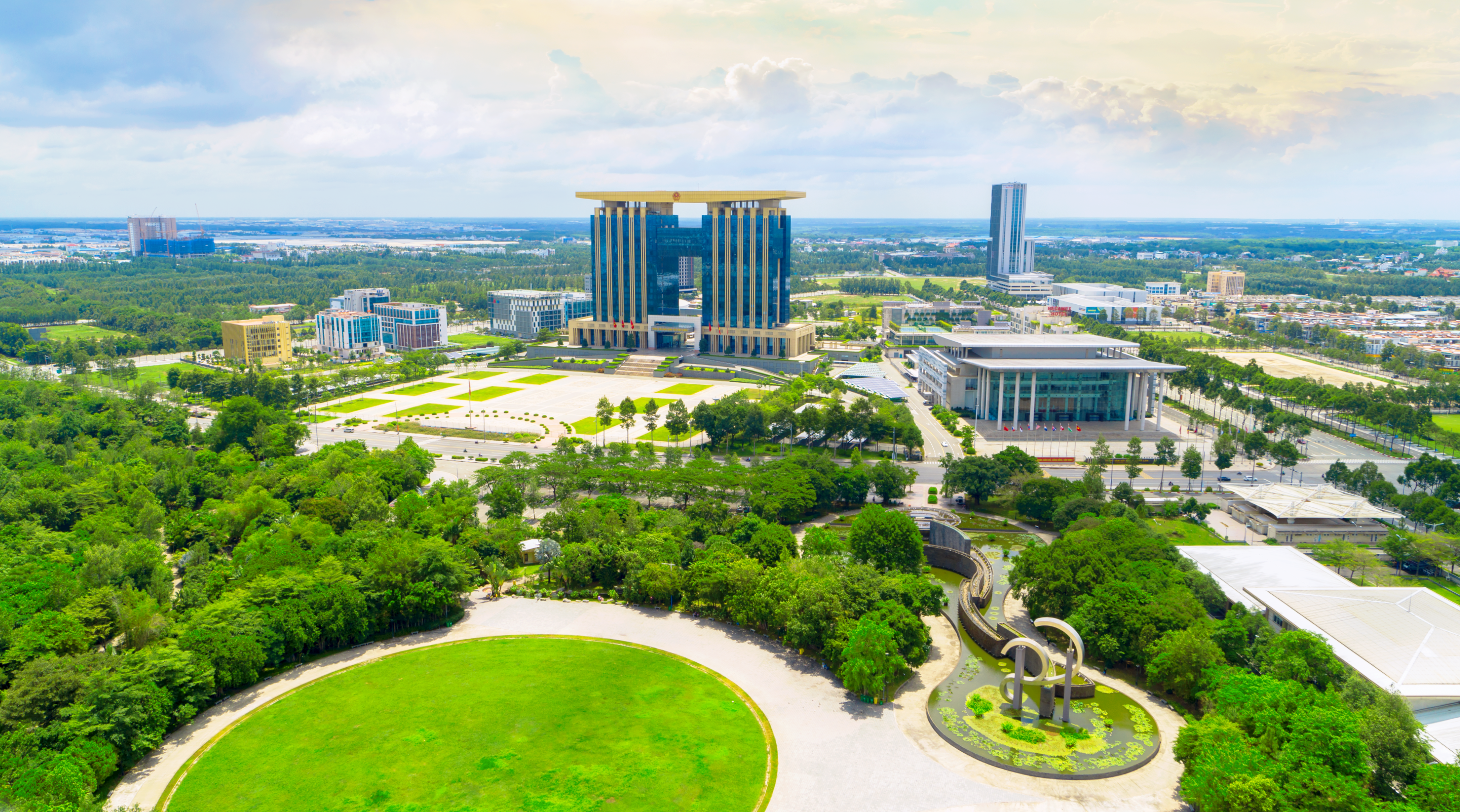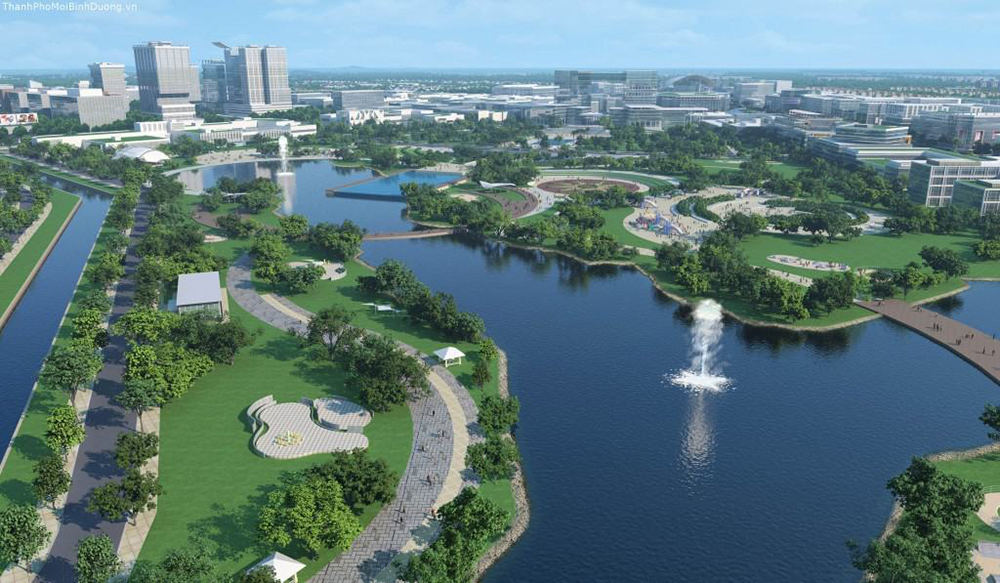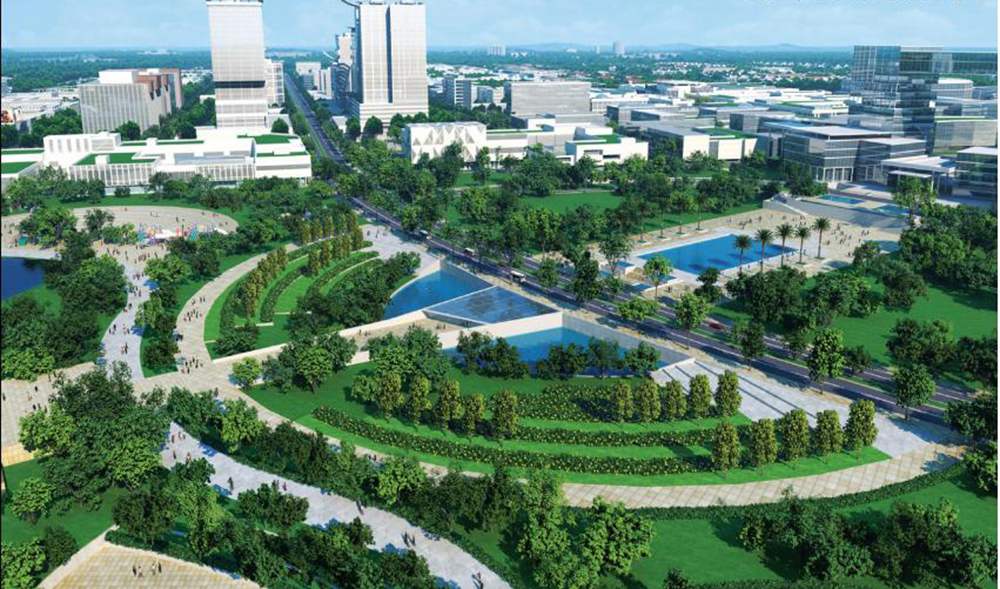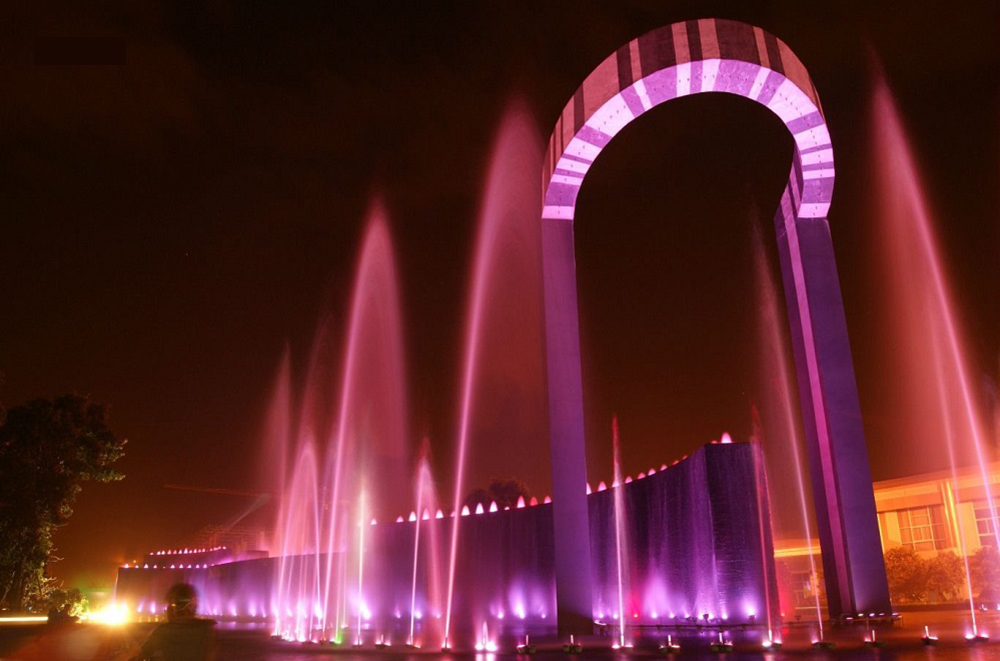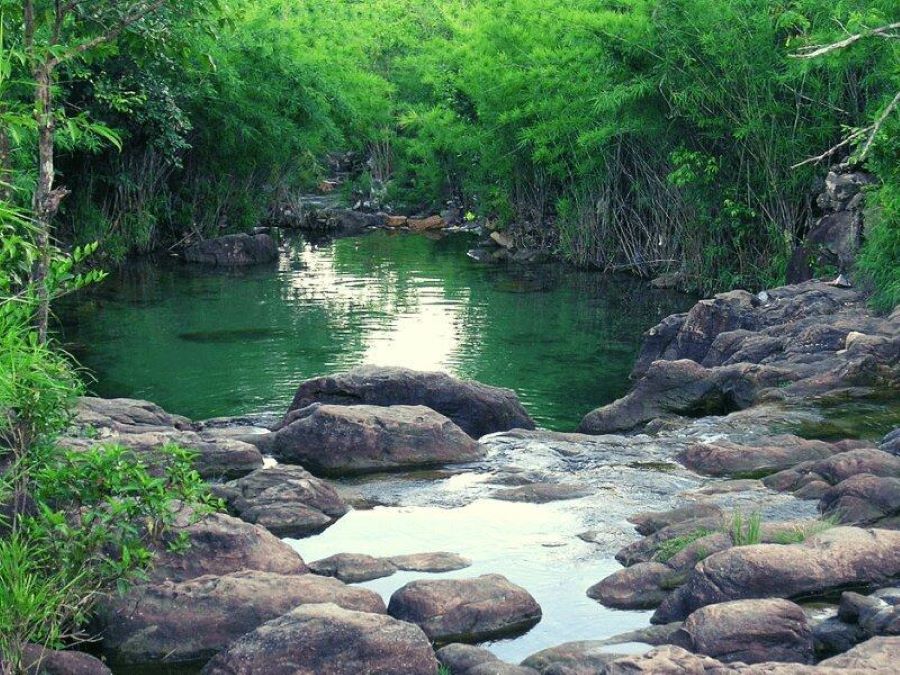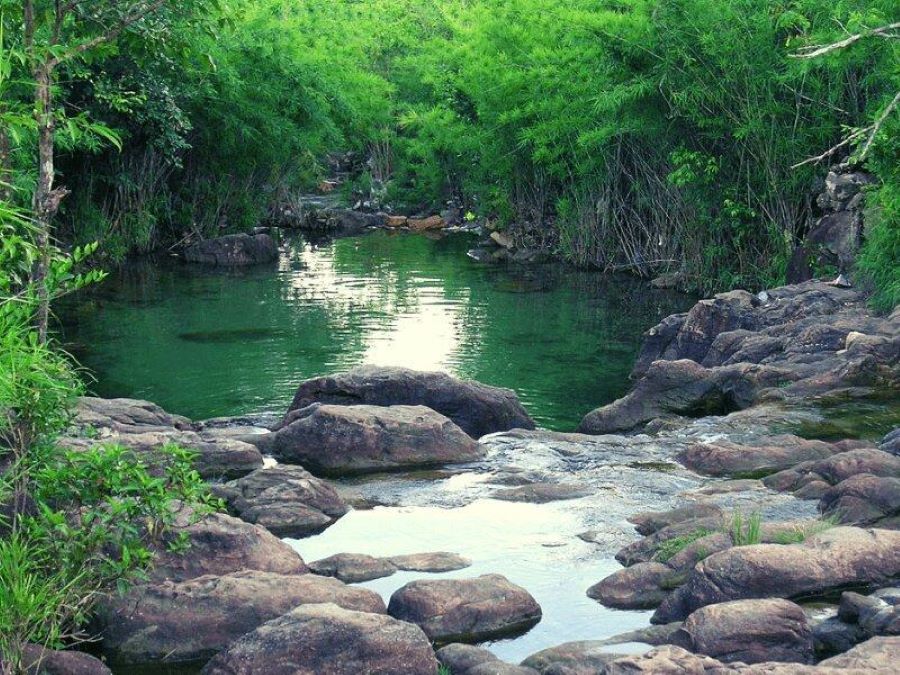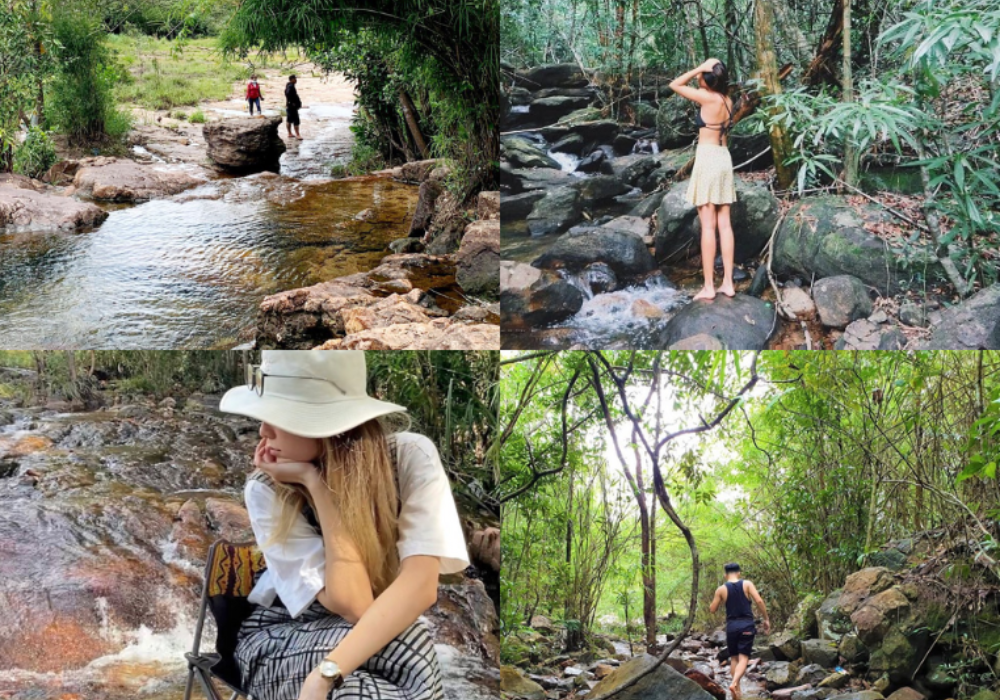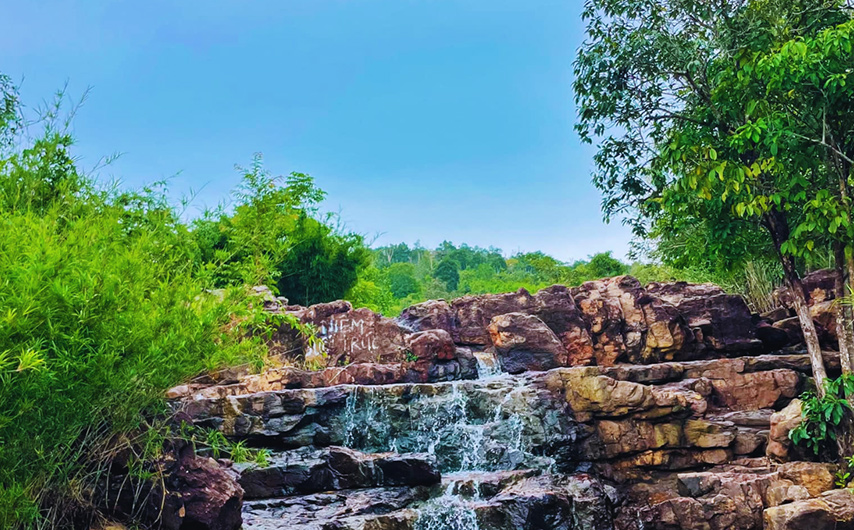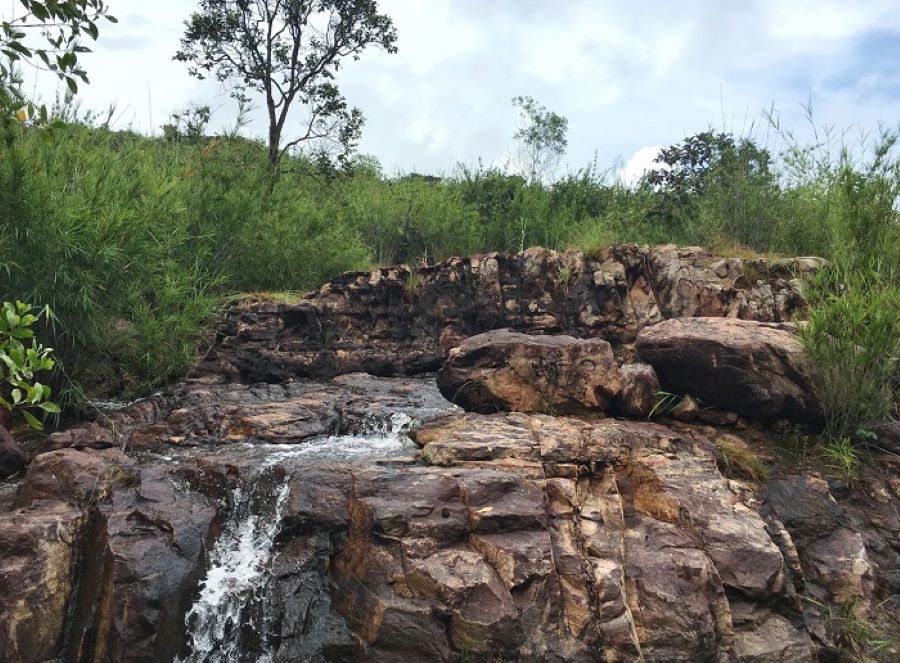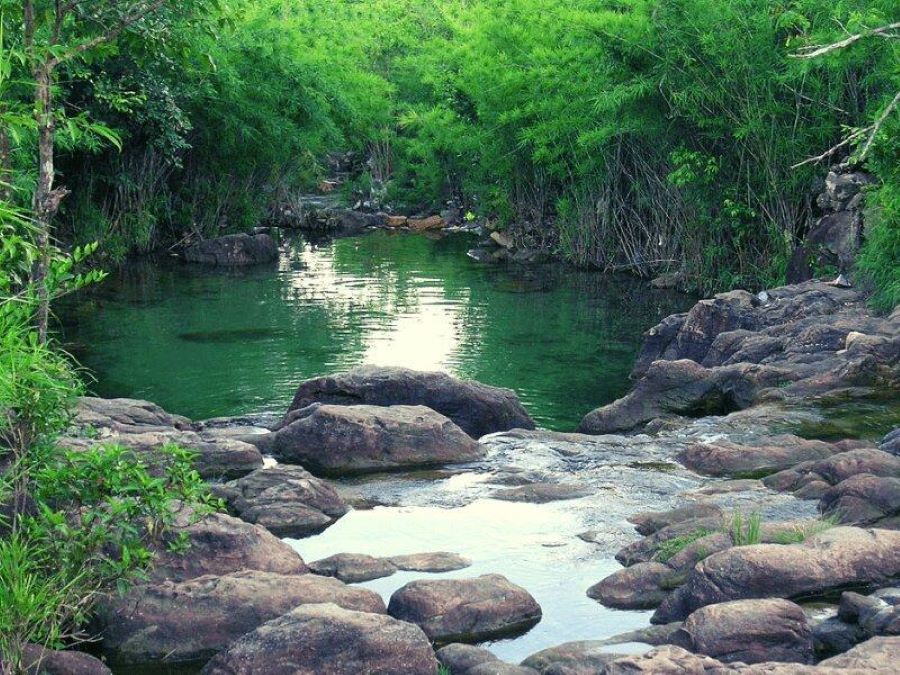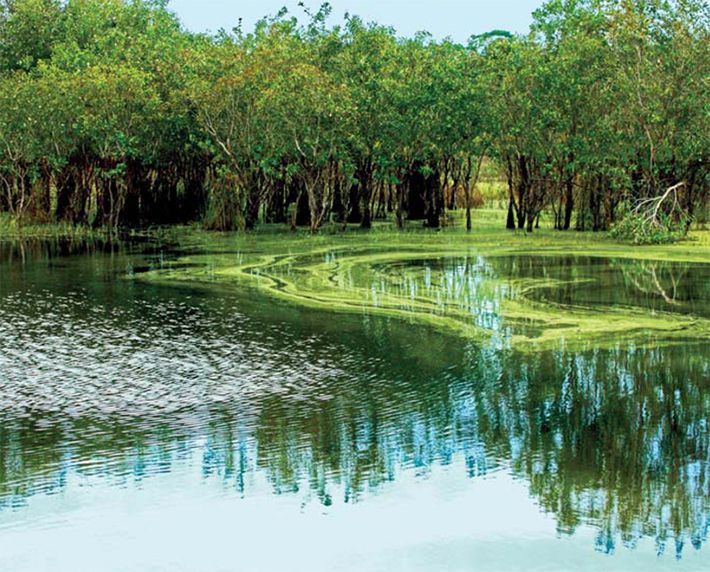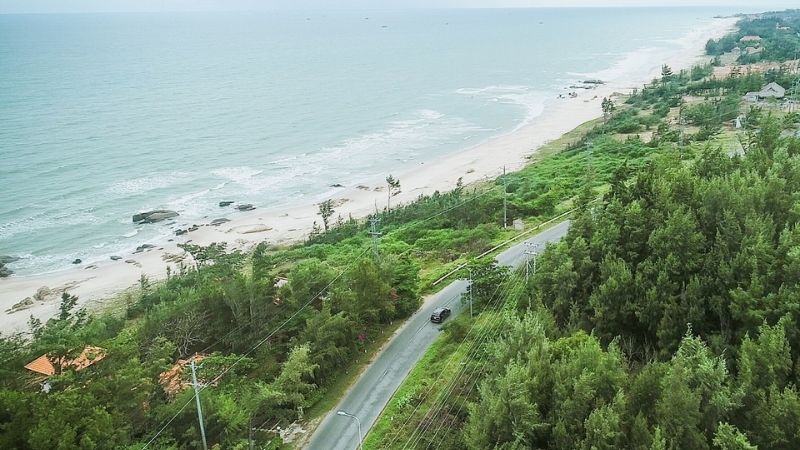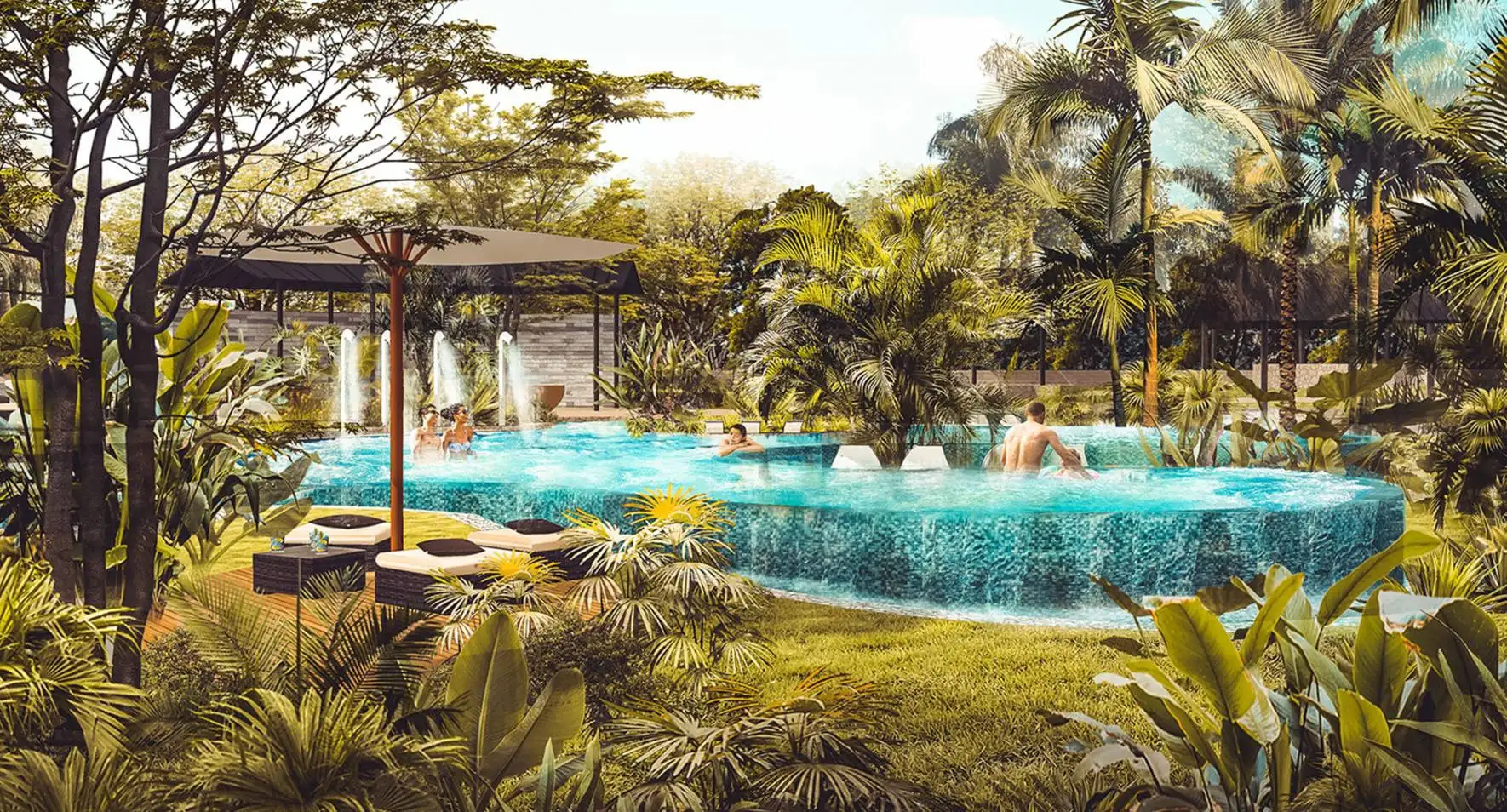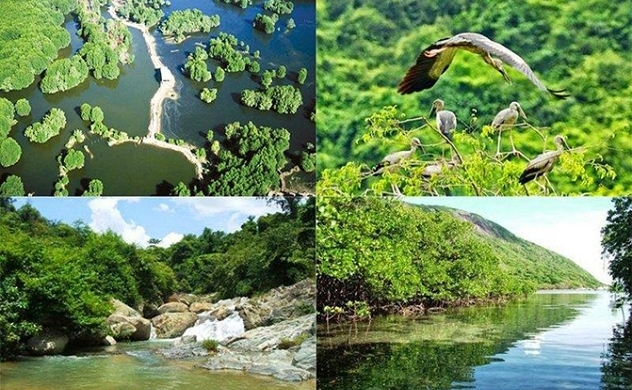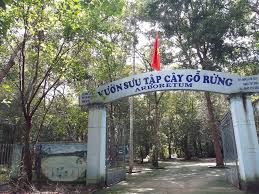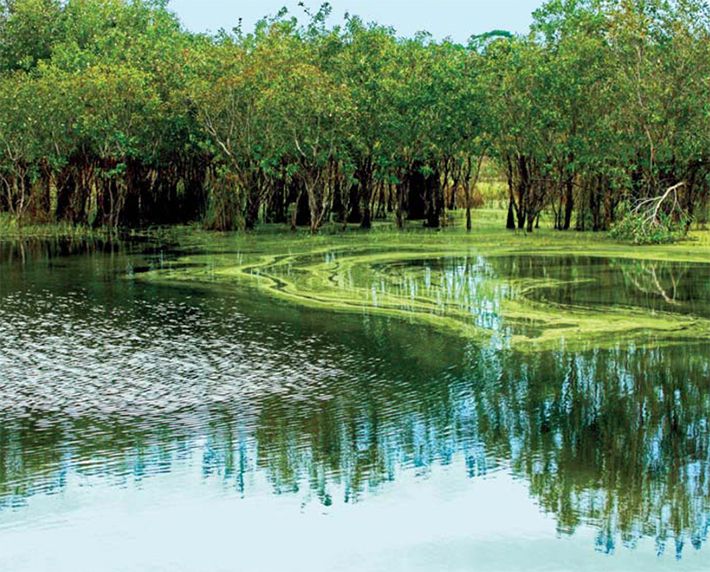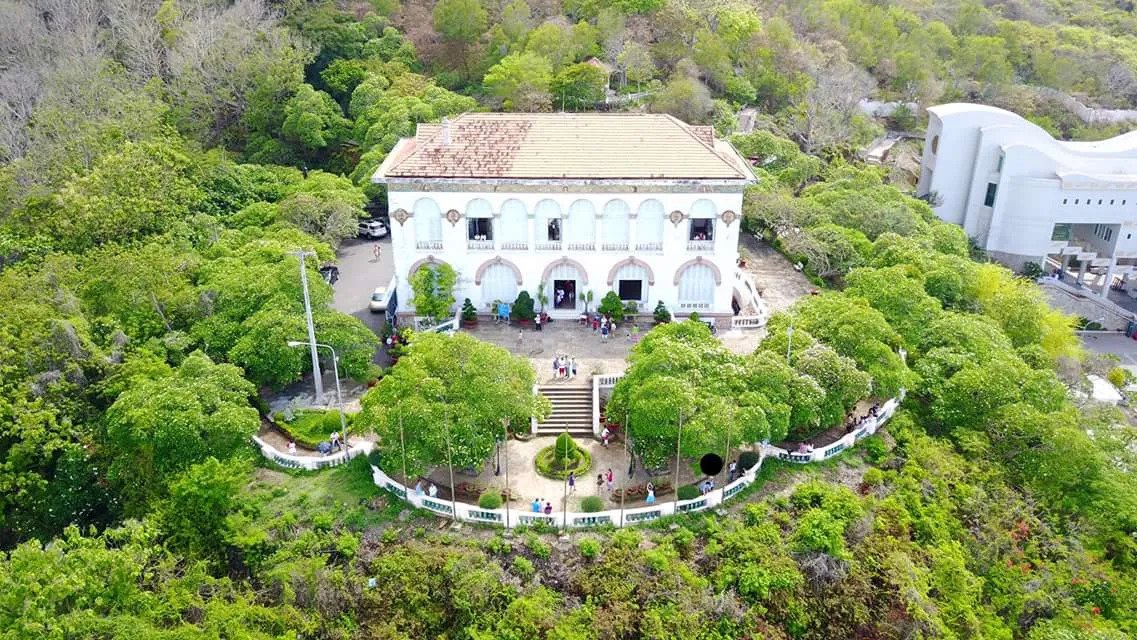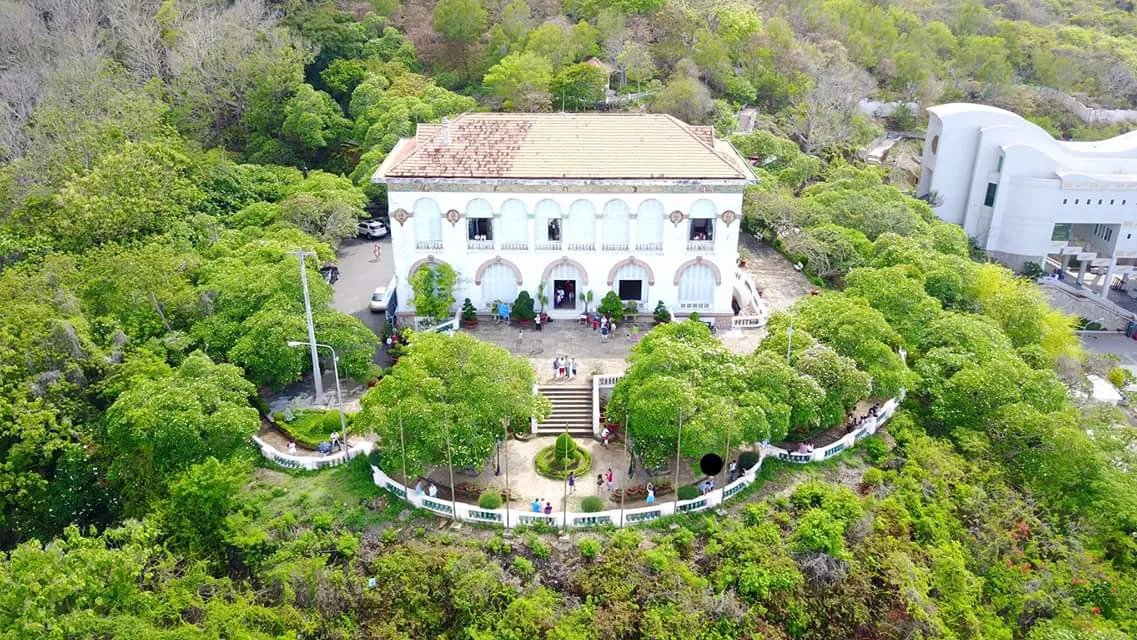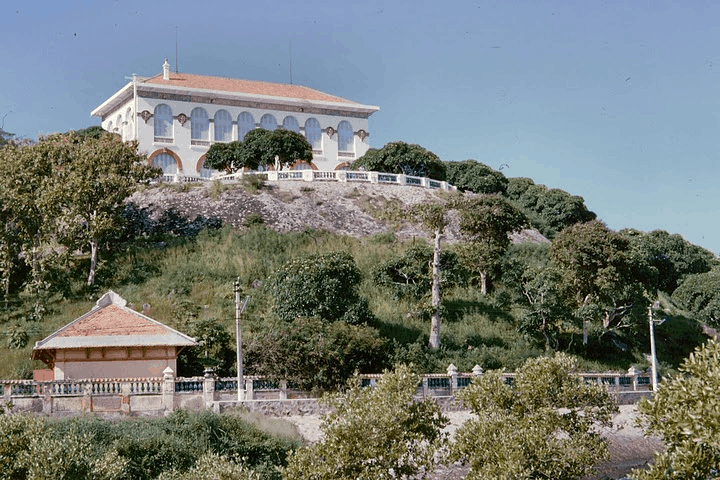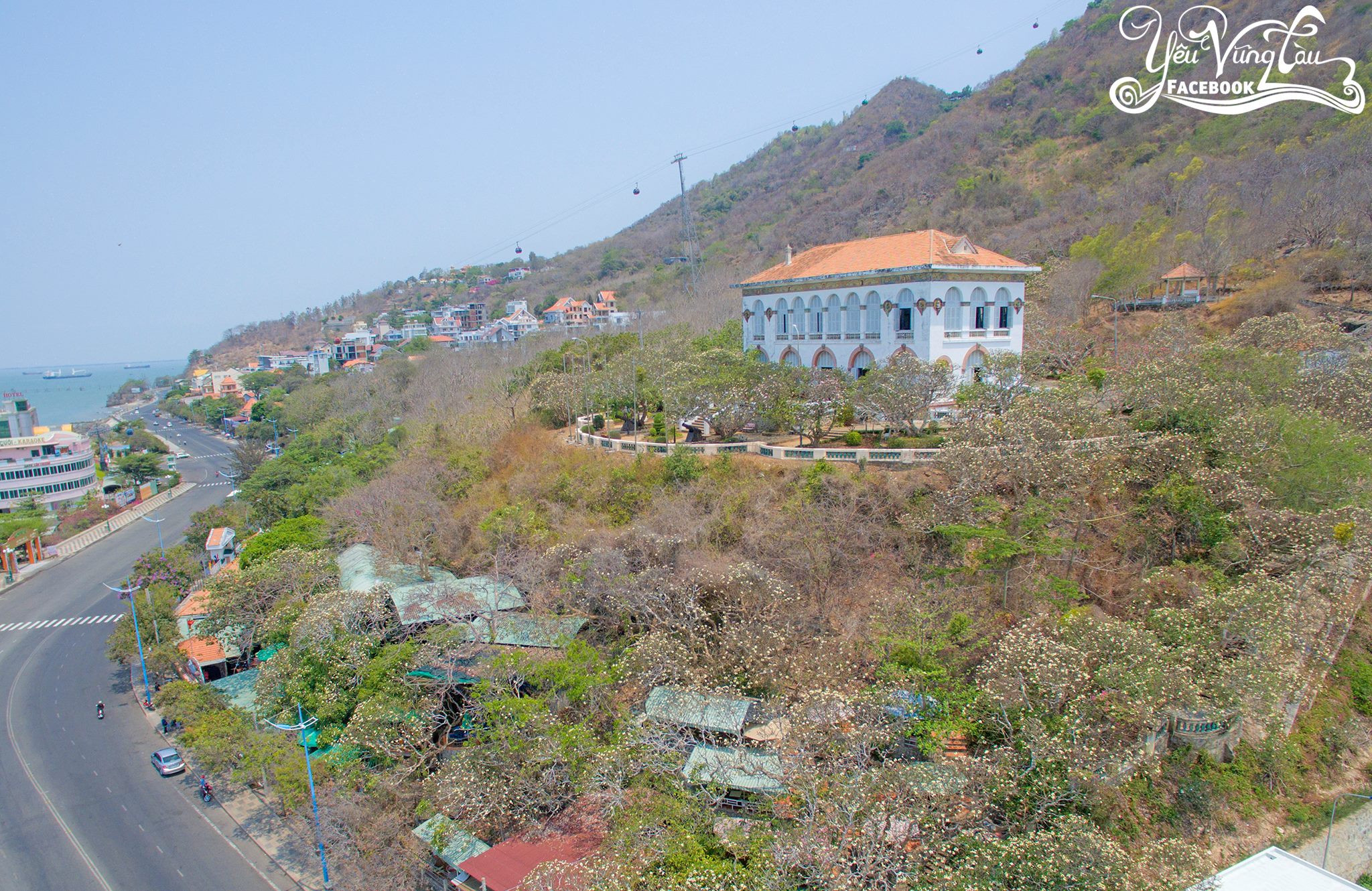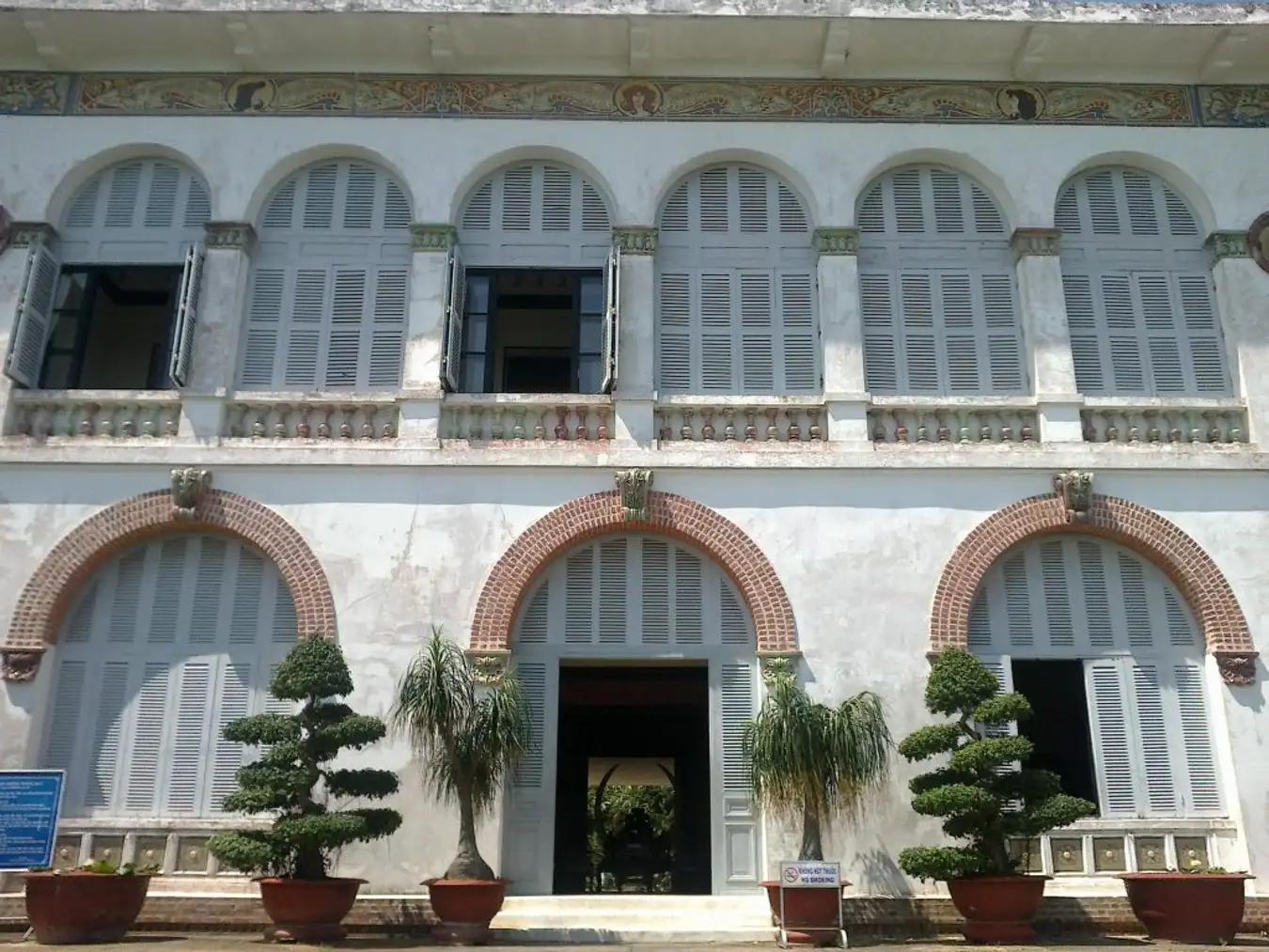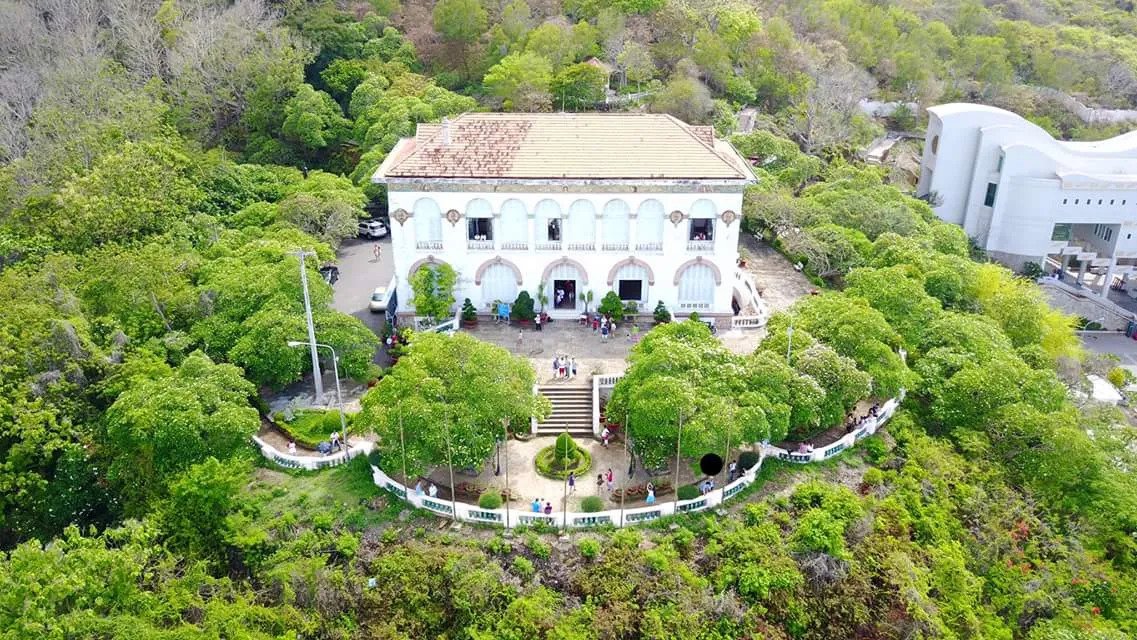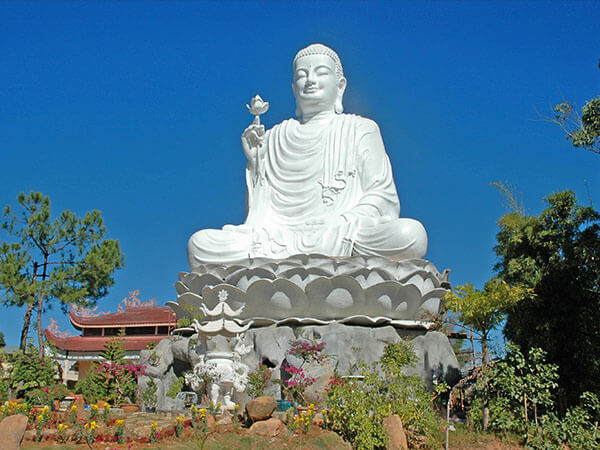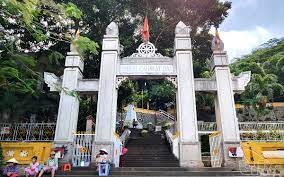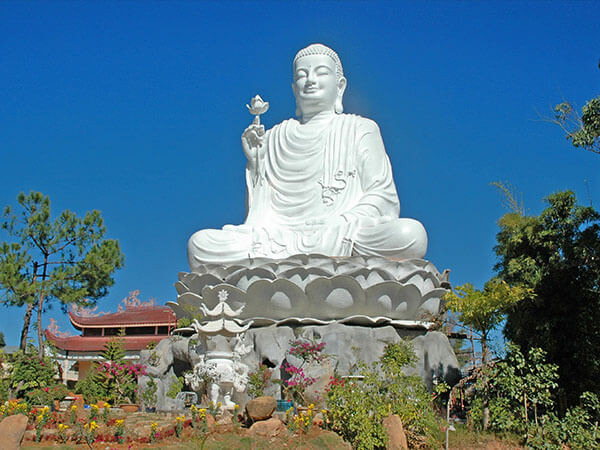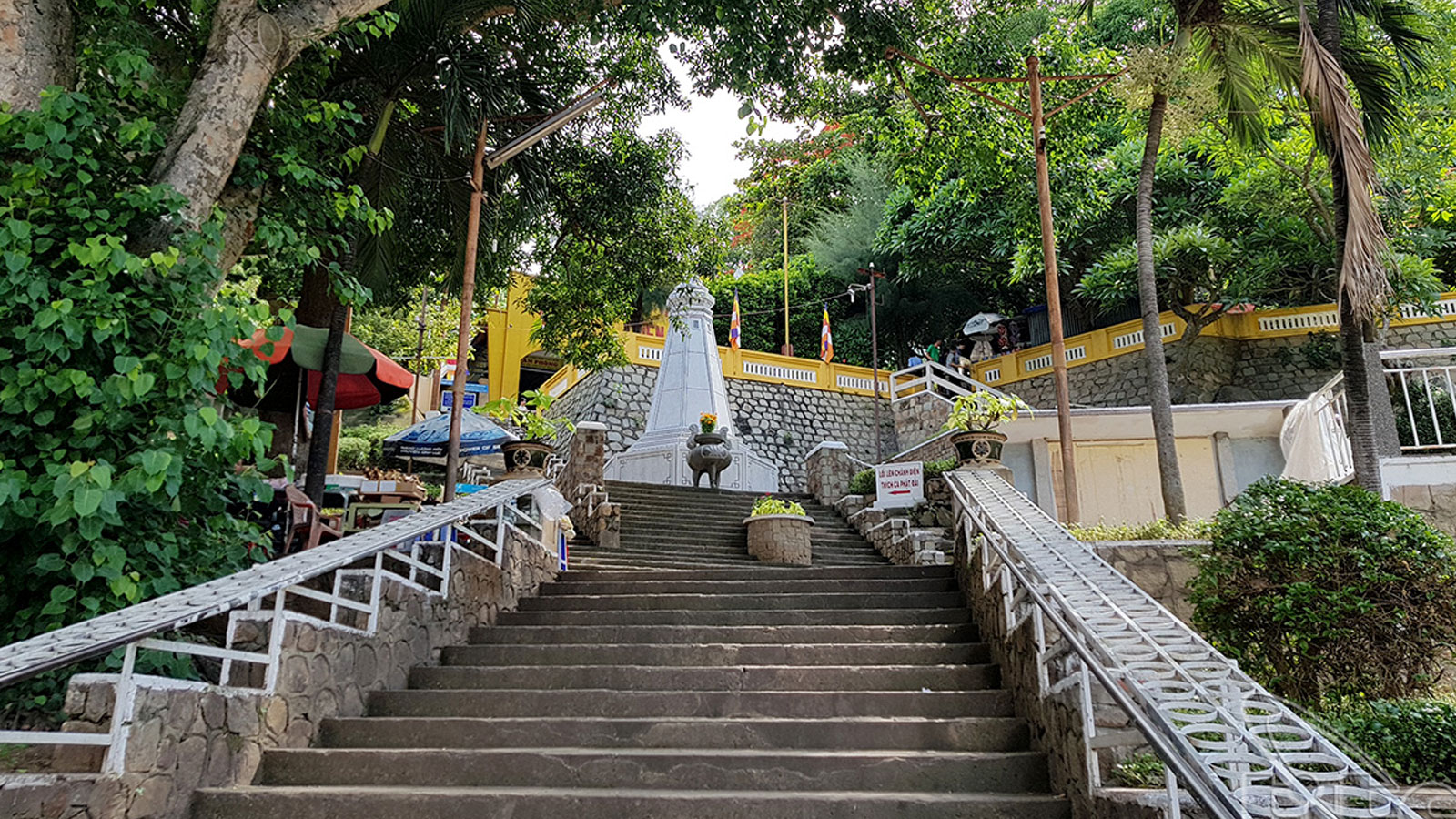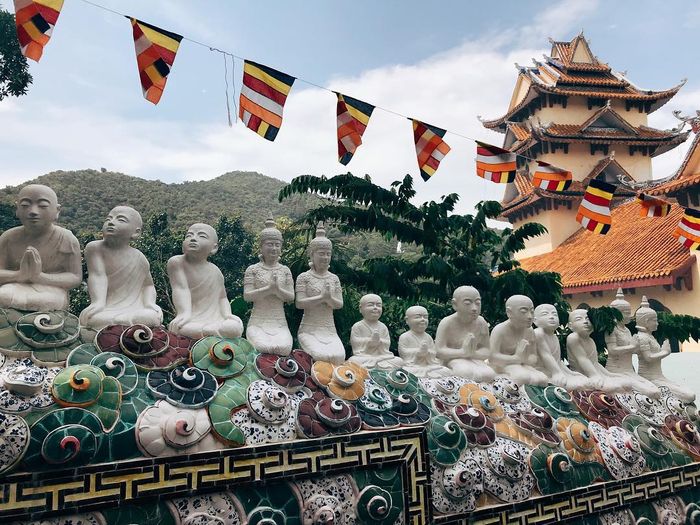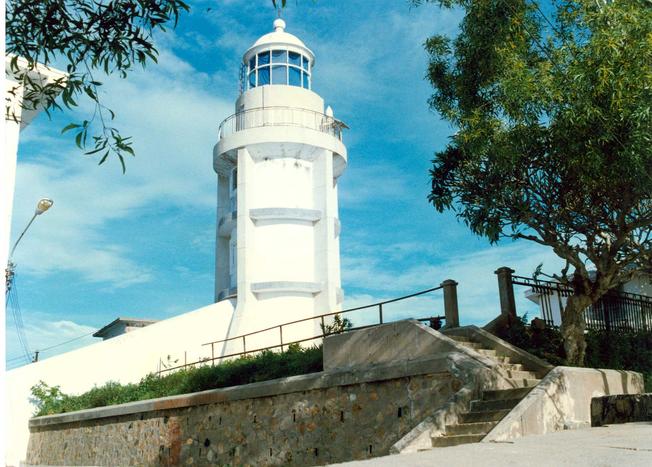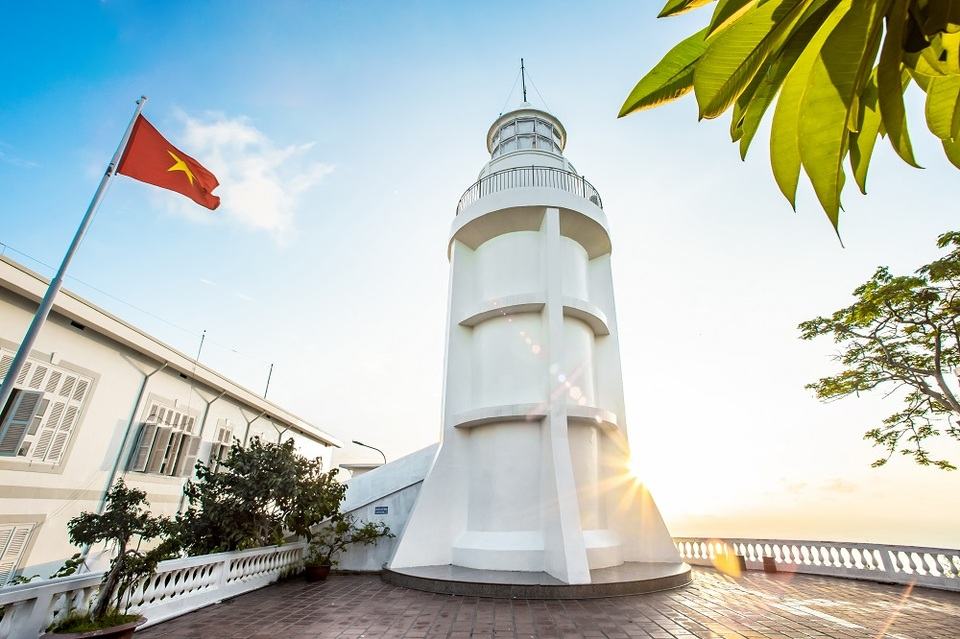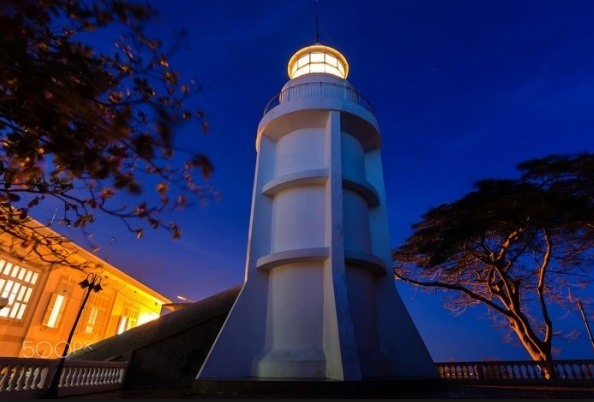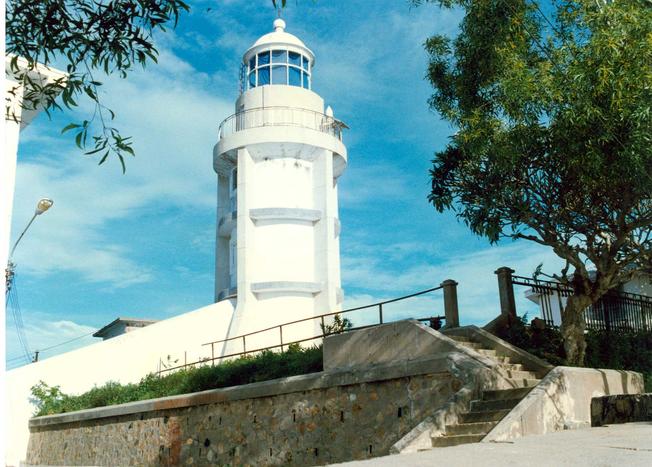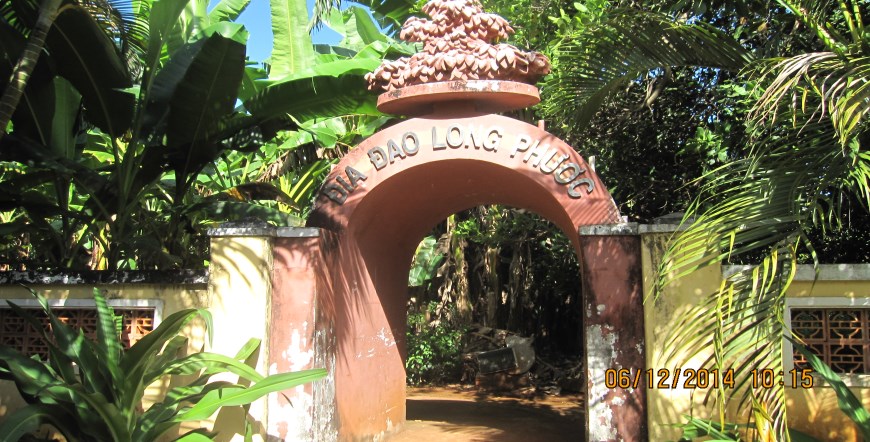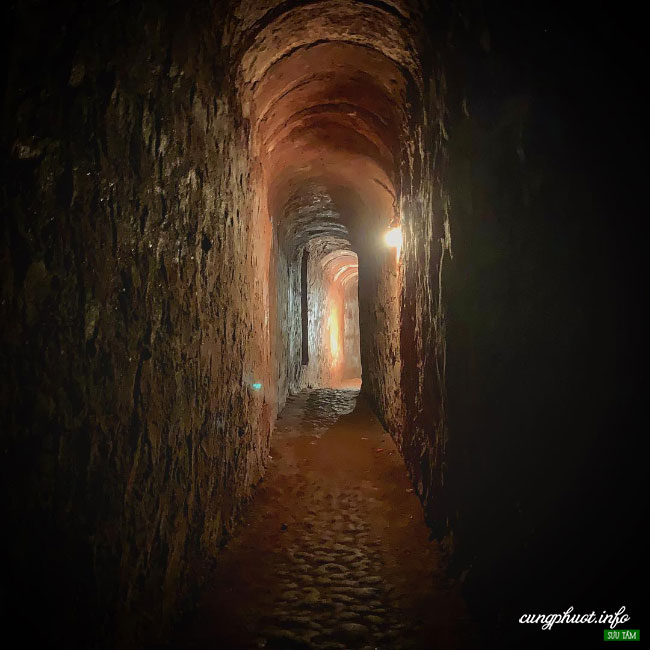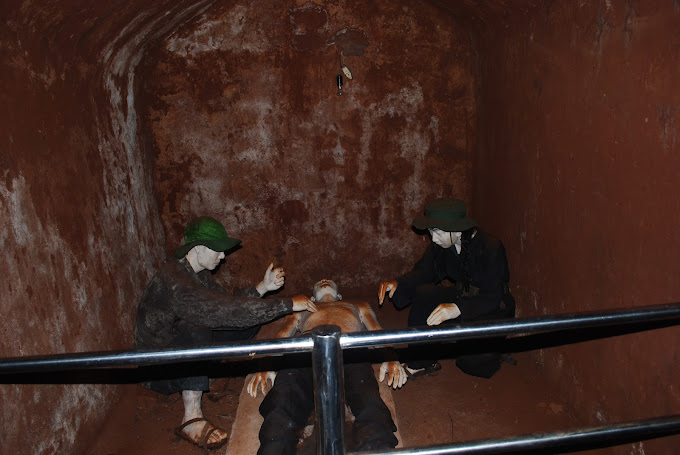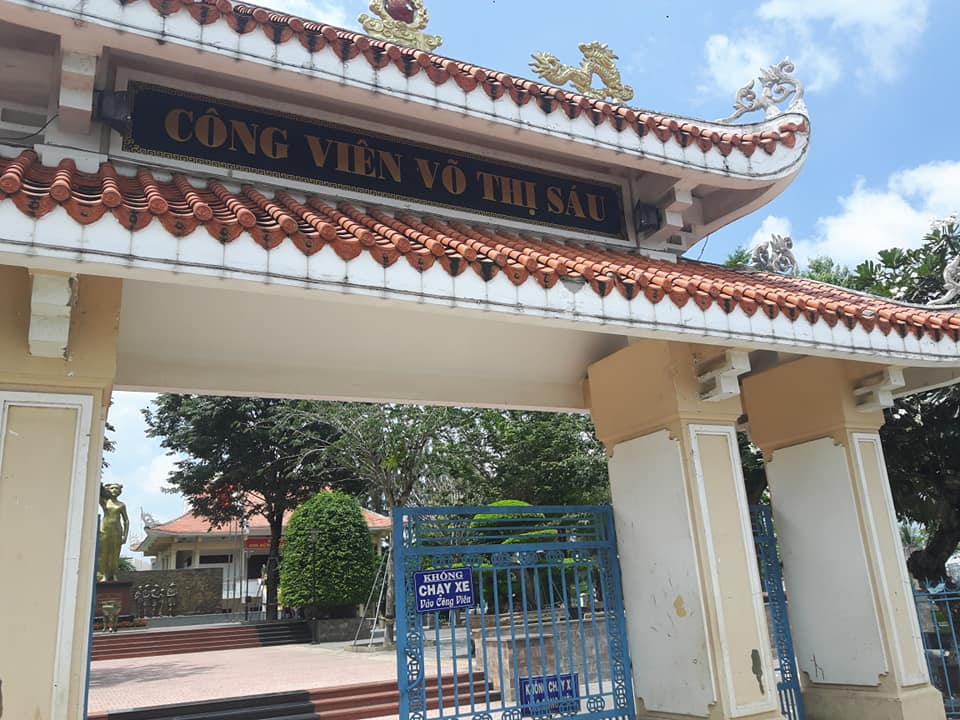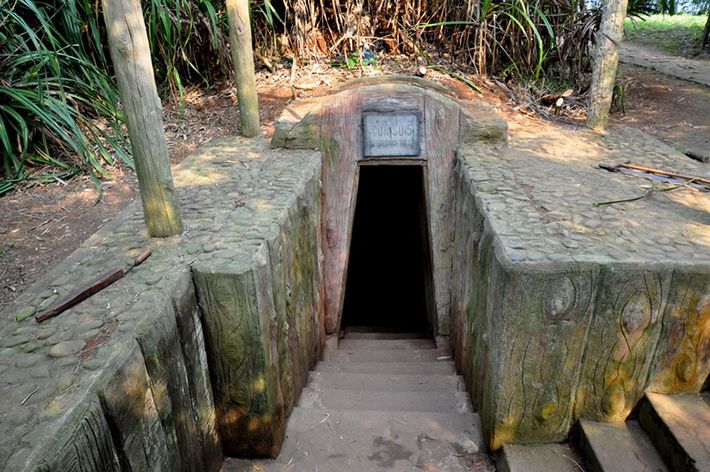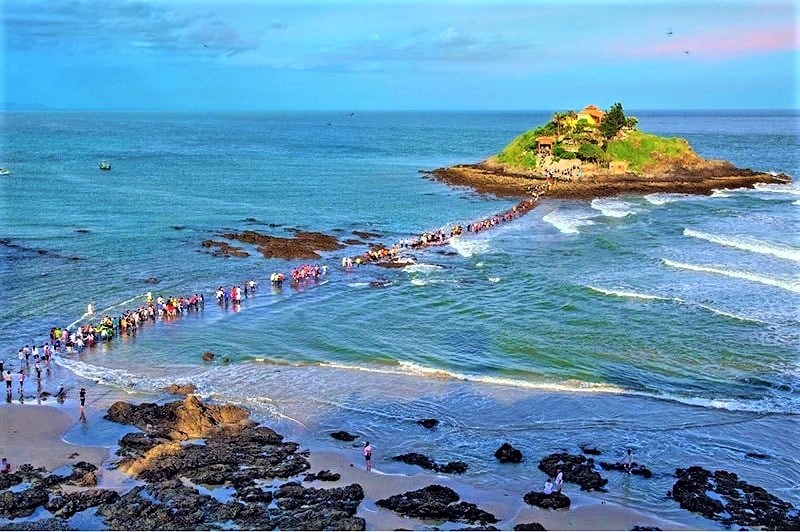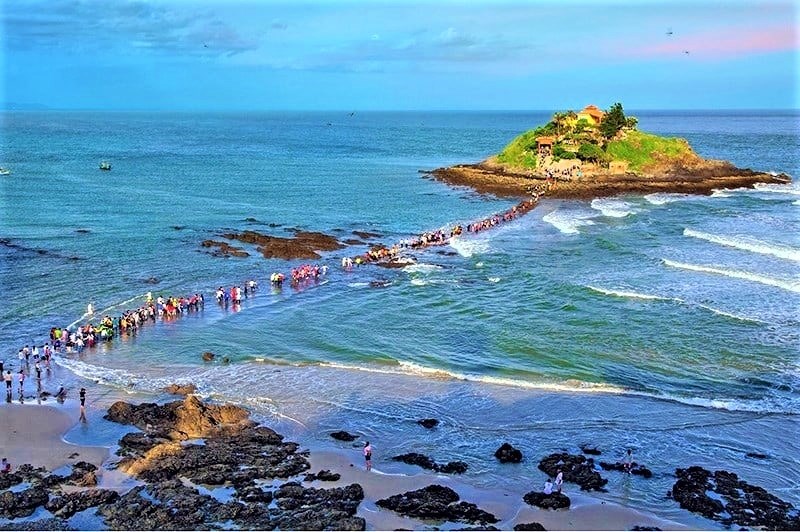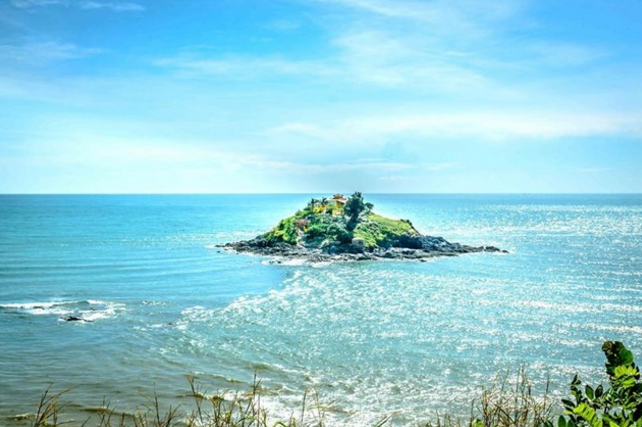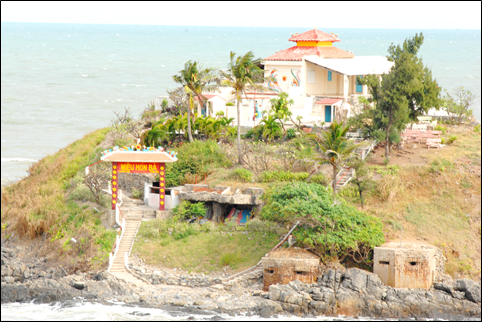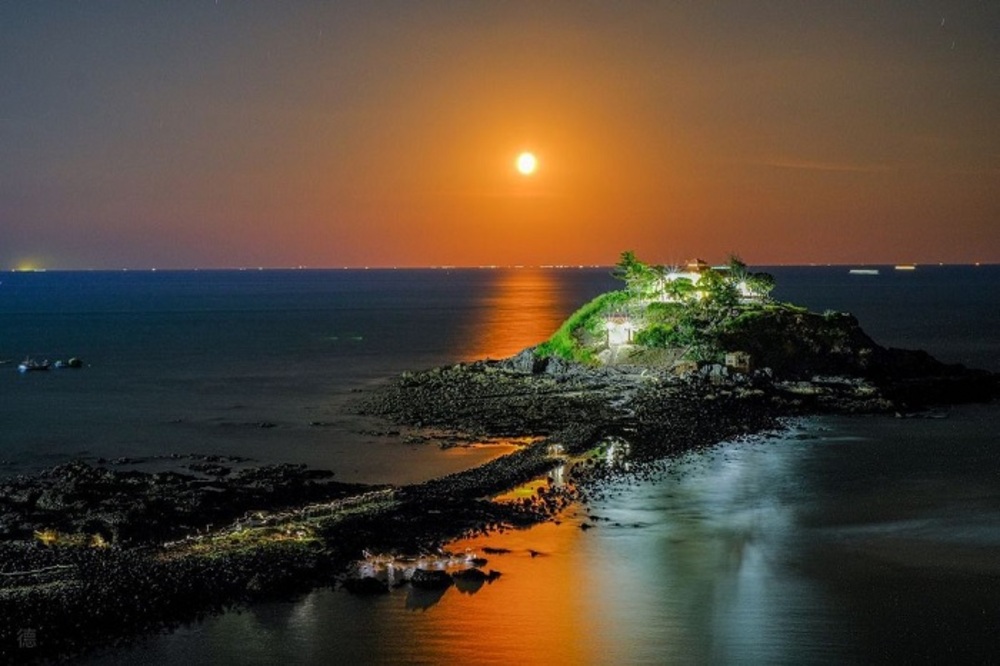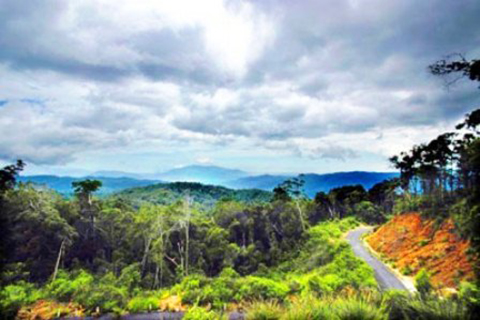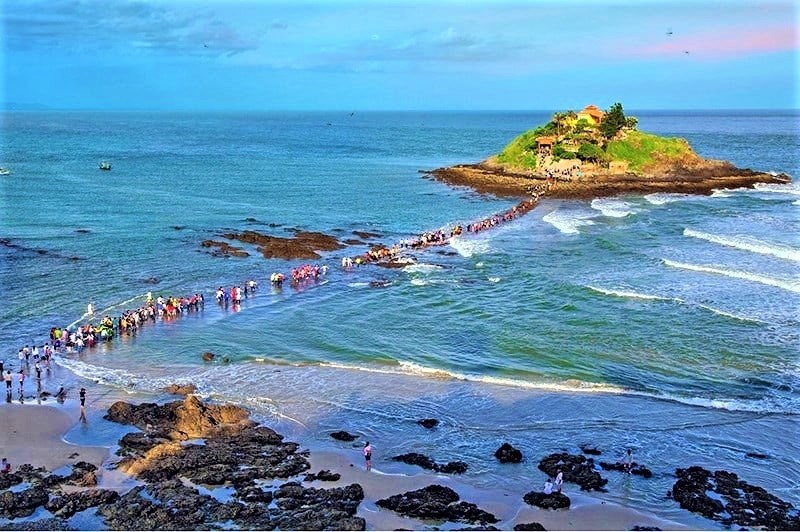Tourist destination
Na Hang tourist area
Vung Tau Pearl Island, formerly known as Cu Lao Bai Ngua, is covered by mangrove forests with perennial tiger, parrot, and mangrove trees interwoven like wave-blocking walls. Because it belongs to the development reserve plan for mangrove land, the nature here is cared for and preserved almost intact. Appearing in the bustling industrial city of Vung Tau, Vung Tau Pearl Island attracts people with its original wild beauty. Tourists still compare this island to a masterpiece picture bestowed by nature. Coming here, you can participate in many water games or simply relax in a leaf hut. Free time on Vung Tau Pearl Island is very suitable for a vacation with family, group of friends or colleagues. In recent years, Vung Tau Pearl Island tourism has suddenly become "popular" because of a series of interesting experiences. Coming to this tourist destination, you can not only admire the "pure natural" beauty but also visit the achievements created by humans. Seen from above, Ngoc Vung Tau Island is a deep blue color dotting the landscape of Dinh River Bay. "Zooming" closer to the island, it's easy to see the "forest walls" created by mangrove trees such as mangroves, mangroves, and parrots that are hundreds of years old. The most enjoyable thing is sitting on a canoe and weaving through this mangrove forest. The smell of the sea, the wind and fresh air filling your chest will make you temporarily forget about the dust and hustle and bustle of the streets. Between the vast waves of water and the forest at high tide, you will discover many new things in the ecosystem here. Right under the boat, it is not difficult to see fish struggling. Above the tree canopy are the bustling sounds of birds returning to their nests. All that is most intact and pristine can be clearly felt at this very moment. Although Vung Tau Ngoc Island tourist area always aims to preserve nature in its original state, there are still some artificial details for visitors to have the best experience. Typically, huts made from bamboo and leaves are designed to float on the water. From here, wooden bridges are installed running straight to the bay so you can fish, admire the scenery, enjoy seafood or take beautiful check-in photos. The port cluster on Ngoc Island is one of the areas that attracts the attention of many visitors. Here, you can "see" the panorama of the modern oil and gas industry, the largest in the country including: seaports, rig base factories, and shipyards. The modern image of the port clusters on Ngoc Vung Tau island is a "picture" sketching out the concept of industrialization and modernization more clearly and realistically than ever. Admiring the country's development makes me feel extremely proud. Amidst the chaos of work and overwhelming deadlines, you often dream of a carefree and leisurely life of "raising fish, raising chickens, and growing vegetables". If so, don't miss the experience of "transforming" yourself into a fisherman at Vung Tau Pearl Island. You will experience for yourself the life of canoeing, netting, fishing, and fishing. And of course, you will also enjoy the results that you have created. After the salty sweat comes fresh seafood - a natural gift for you that brings with it the flavor of the sea. In addition, you can also roam freely through kayaking, water cycling, sailing or taking a speedboat to visit the oil and gas rig. Physical activities help the body become healthier and eliminate "toxins" that have accumulated in the mind for a long time. The specialty of Ngoc Vung Tau Island is of course fresh seafood dishes. "Everything" swimming in the sea can be found at this tourist destination. You can reward yourself after hard working days or choose them as gifts for loved ones. However, there is a very popular dining experience on Pearl Island, which is grilled oysters. Visitors have the opportunity to visit the "island king" who raises oysters, harvests and processes them. Besides, you can also choose, shell and grill newly caught oysters yourself.
Ho Chi Minh City
From November to April
3502 view
Na Hang tourist area
Binh Duong Tibetan Temple is a famous ancient temple with the most sacredness in the South. Coming here, you will be immersed in the pure atmosphere with each sound of the temple bell. Binh Duong Tibetan Temple was built in the typical architectural style of Tibetan Tantric Buddhism, the highlight is the statue of Bodhidharma created from the real hair of thousands of Buddhists. The temple space is very large, planted with many trees, especially ancient trees, so the air is very cool and fresh. In recent years, thanks to the growing development of spiritual tourism in Binh Duong, Tibetan temples have also attracted more people's attention and visits. For those of you who have ever had the opportunity to visit Vung Tau Tibetan Temple, you will realize that these two temples have many similarities in architecture. Binh Duong Tibetan Temple was built in the early 20th century, around 1928. This pagoda was started by Zen Master Minh Tinh. Initially, the pagoda was named Buu Huong, belonging to the Northern sect. At this time, the pagoda was just a small hut to worship Buddha and for Zen masters to practice. In 1937, the pagoda was renamed Tibet Pagoda by Zen Master Minh Tinh. Binh Duong Tibetan Pagoda is famous for its typical Northern Buddhism architecture, designed with many similarities to temples in Tibet. Not featuring traditional Vietnamese architecture, Tibetan pagodas give us a very different feeling about Buddhism from the beginning, with images filled with mystical Tantric images. The main hall area is designed with many square shapes, in the middle is a tower and quadrilaterals with a height of about 15m. The top floor is also the roof of the temple, containing five statues of five Buddhas representing Tibetan Buddhism. In particular, the statue of Buddha Tathagata has a shape very similar to the Mandala Buddha in Tantric concept. The deeper you go inside the main hall area, the more differences you will see between Binh Duong Tibetan Temple and traditional Vietnamese temples such as Hoi Khanh Pagoda, Chau Thoi Pagoda, etc. In the middle of the shrine is a statue of Shakyamuni Buddha meditating, the statue is about 2.3 meters high, surrounded by statues of Buddhas and Bodhisattvas. The special thing is that the temple space is not decorated with many dragon and phoenix motifs, the architecture is quite simple, creating a mysterious feeling. Therefore, if you have the opportunity to visit the Tibetan temple, you will have a very deep impression of the architecture of this temple. Binh Duong Tibetan Temple has been recognized by Guinness Vietnam Records as the temple with the largest statue made of hair. A special point is that even though the statue is made of hair, it still clearly and realistically depicts Bodhidharma's charisma. The statue depicts Bodhi Lama in the position of carrying a blow on his shoulder, with a Qiankun bag on one side and a Lankavatara sutra box on the other. On his head, Buddha wears a conical hat typical of Vietnamese culture. The details of the Buddha statue are connected with glue but are very sturdy. The frame is made of iron, and the outside is braided with the hair of thousands of Buddhists. The total height of this statue is 2.38m and width is 1.74m. The statue was crafted in 1982, after decades of receiving hair from Tantric followers. Besides admiring this unique and impressive statue, you also have the opportunity to listen to many stories about the construction process of Binh Duong Tibetan Temple. That was the journey of monk Minh Tinh when he was alive, studying Buddhism in India, then returning to build this famous temple with the desire to bring orthodox Tantric ideas to Vietnam. Monk Minh Tinh's entire journey to worship Buddhism was recorded in his diary and is still kept intact in the temple to this day. If you have the opportunity to visit a Tibetan temple during the holidays, besides visiting the temple, you can also participate in jubilant festival activities. Especially on the 8th day of the first lunar month, the pagoda will hold a ceremony to pray for peace and drought relief. This is an opportunity to attract a large number of visitors from all over to the pagoda hoping for a favorable and peaceful new year.
Ho Chi Minh City
From December to April
3277 view
Na Hang tourist area
Binh Duong New City Park is designed and built to be the largest entertainment destination in Thu Dau Mot. With an area of more than 70 hectares and many impressive works, this park is one of the destinations you cannot miss on your Binh Duong travel itinerary. Binh Duong New City Park is known as the leaf The city's lungs have a prime location, in Phu My ward, right in the city center. This project was started construction in 2009, following the Singapore standard park model. This place has become an ideal destination in Binh Duong for fun, entertainment, and picnics, attracting not only Binh Duong but also attracting many young people from Ho Chi Minh City, Vung Tau, and Long An to visit every weekend. . The new city park is designed in a space very close to nature, bringing a feeling of airiness, relaxation and coolness. Right from the start of construction, the investor has paid great attention to the green campus, smooth lawns, straight rows of ancient trees, peaceful lakes, etc. In addition, there are winding roads with colorful flower bushes and shady rows of stone benches on both sides. Even the public toilets are invested in very methodically, hygienically and by the park. Modern. Referring to the experiences when exploring Binh Duong New City Park, the colorful water music performance is the most impressive thing. The park built a large lake area, with a unique shape, clear blue and quiet lake surface. Especially the modern lighting and fountain system, causing millions of water jets to shoot out, coordinating harmoniously with each other to create an extremely sparkling and brilliant scene. In the evening on all days of the week, the sprinkler system and lighting will be activated. The water music performance lasts about 10 minutes, attracting a large number of young people to admire and take photos. After the performance ends, the fountain system continues to operate. Thanks to the large campus and free entrance tickets, Binh Duong New City Park has become a familiar place to organize picnics, team building activities and have fun and exercise people. You just need to prepare game equipment, food and drinks and you can have fun together in the fresh, cool atmosphere. However, because the park is divided into many different areas, the lawns are separated by lakes and paths, so this place is only suitable for small and medium team building. For large-scale companies and organizations with a large number of members, you should find another more suitable location. As for families and groups of friends, Binh Duong New City Park is an extremely ideal picnic location, with a green, clean space and completely free. The journey to check-in Binh Duong at the new city park will take you to an extremely cool space. Therefore, no matter where you stand, you can take countless beautiful photos. This place is suitable for those who like fresh, dynamic natural backgrounds, like to pose on the lawn, lake, etc. In the evening, thanks to the water music performance and large-scale lighting system, the whole campus will become extremely sparkling, very suitable for you to take artistic chill photos. When visiting Binh Duong New City Park, you will see many couples choosing to come here to take wedding photos or groups of students taking yearbook photos. Because admission is free, you can bring many costumes, accessories, and tools for professional photography. However, the park is very crowded on weekends, so if you want a perfect background, you should go during the morning or noon time on weekdays. With an area of more than 70 hectares and many impressive works, this park is one of the destinations you cannot miss on your Binh Duong travel itinerary.
Ho Chi Minh City
From December to April
3460 view
Na Hang tourist area
In the midst of modern, hustle and bustle life, everyone wants to find a peaceful place to sometimes "escape" from the chaos and worries. This is the reason why in recent years, the number of tourists coming to Suoi Truc has increased rapidly. Not only Ba Den Mountain, Dau Tieng lake, Ma Thien Lanh, Tay Ninh also has a dreamlike Truc stream - a cool green region that thousands of people want to explore. Suoi Truc is located on the highest mountain of the Cau mountain cluster, located in Dinh Thanh commune, Dau Tieng district, Binh Duong province. This year-round cool stream is also known as Tien stream, Dau Tieng Truc stream (because it is located next to Dau Tieng lake) or Truc Tay Ninh stream because it is located next to Tay Ninh province. As soon as you set foot at Tranh stream, a journey of living rich in experiences amidst pristine nature will open up. From Saigon to here, the distance is about 85km (equivalent to about 2 hours of travel). Therefore, this place has long become a favorite picnic spot for "travel" enthusiasts and an attractive destination on the journey to explore Tay Ninh. Checking in to the bamboo forest, bathing in a cool stream, camping on a rocky beach... will definitely be unforgettable marks on your trip. To fully experience the pristine beauty of Suoi Truc, you need to go upstream. The path to the forest is on the right, only about 10 meters from the foot of the mountain. On both sides of the road leading to Suoi Truc are green bamboo forests, rustling in the wind. If you come here on beautiful sunny days, you will witness firsthand the rays of sunlight "dancing" through the trees, reflecting on the water surface and sparkling, incredibly beautiful foliage. In addition to the cool stream all year round, there is also rich vegetation around. Beneath the thick, towering bamboo forest are lush green grasses and vibrant wildflowers. Occasionally, there is the sound of birds chirping and chirping. The pristine, fresh natural scenery will help you temporarily forget all the troubles and worries in life. Here there is a rocky beach that over time has been eroded by water into waves of rocks, square and smooth rock rapids that are extremely strange. Associated with this amazing natural rock is the story of the giant's bed. Local people still circulate a legend that because he missed his wife so much, the giant "guy" couldn't sleep, causing the "bed" to wrinkle and create the current stone waves. Passing through the "giant's stone bed" area, after another short stream is the Step Falls. The wild scenery here with clear, cool water is an ideal place to have fun and cool off. In the rainy season, a lot of upstream water flows down, the waterfall pours down from above, creating white foam, creating a majestic but no less poetic natural scene. After cooling off and catching fish in the Step Falls area, you can return to camp and have a barbecue on the "stone bed". This large rocky beach stretches for more than 3km² so it can accommodate up to 300 tents. On weekends or holidays, there are quite a lot of tourists coming to Truc Stream, so remember to set up camp early to get a good spot! You can rent a tent and grill but remember to bring Tay Ninh specialties to enjoy! Located next to the beautiful Dau Tieng Lake - a place in the territory of two provinces of Binh Duong and Tay Ninh, Truc Stream of Dau Tieng Lake has long been considered a unique piece of nature with its wild beauty, intermingling between mountains and forests. majestic and peaceful small stream. This is also one of the rare places that is not located in Tay Ninh province but is favored by many tourists coming to Tay Ninh.
Ho Chi Minh City
From May to December
3389 view
Na Hang tourist area
Binh Chau National Forest is a nature reserve located in Ba Ria - Vung Tau province, about 150 km southeast of Ho Chi Minh City. The national forest has a large area, with an area of about 11,000 hectares, including land and sea areas. With pristine natural landscapes, this national forest is an ideal destination for those who love exploring nature and want to learn about the diverse tropical ecosystem. Binh Chau National Forest is famous for its rich flora and fauna. This is home to many rare animals and special plants, including primates, deer, monkeys and many rare plants. This creates a diverse and attractive living environment for researchers, scientists and nature-loving tourists. With a convenient location and impressive scale, this is an impressive natural tourist destination, where visitors can participate in a variety of activities such as walking, trekking, cycling, forest exploration and rafting. Immerse yourself in the peaceful beauty of nature. Binh Chau National Forest attracts a large number of tourists to visit because of its fresh, gentle air and diversity of animals. With a rich ecosystem, the National Forest is home to hundreds of diverse animal and plant species. Visitors have the opportunity to discover rare birds, see many primate species living here as well as learn about the diversity of insects. The forest is also the habitat of many rare and unique plants and trees, creating a beautiful natural landscape. Not only does it have biodiversity, Binh Chau National Forest also provides a peaceful space. When entering the forest, visitors will enjoy the fresh air, the sound of birds singing and the sound of gurgling water from streams and small rivers. This creates an ideal space for you to immerse yourself in the peace, greenness of nature and find balance in life. Exploring Binh Chau National Forest gives visitors an interesting and rewarding experience of biodiversity and natural beauty. This is a place to connect with nature, enjoy beautiful views and learn about the value of environmental conservation. Get ready to immerse yourself in the harmony between people and nature in this special forest. Visitors can refer to some of the most suitable and convenient times to visit this famous nature reserve: Spring (February - April): This is the time when forest plants and trees begin to grow green and flowers bloom, creating a lively, enchanting landscape. Temperatures range from 20°C - 30°C, cool and airy, making it the ideal season to explore the national forest. Summer (May - August): Summer in Binh Chau National Forest is quite hot and can be rainy. However, the rains increase the freshness and create a mysterious jungle scene. This is also a good time to participate in swimming and bathing activities. Fall (September - November): Fall brings cooler and cooler air, making it a great time to visit national forests. The trees turn bright yellow, creating a poetic and romantic scene. Choosing when to visit depends on personal preference, but visitors should monitor weather and climate conditions before planning for the best experience.
Ho Chi Minh City
From January to December
3706 view
Na Hang tourist area
Bach Dinh is called by the French name Villa Blanche meaning white villa, located on the side of a large mountain in Vung Tau city at 4 Tran Phu Street, Ward 1, City. Vung Tau. The front facing the sea and the back leaning against the mountain give Bach Dinh a solid position. Bach Dinh is a 3-storey building, 19m high, 25m long, the entire house is whitewashed, with domed doors and tiled roof. When visiting the villa, visitors can see French architecture from shape to decoration with very artistic decorative edges. White Palace was built from 1898 to 1902, used as a resort for the Governor General of Indochina, Emperor Bao Dai and many Vietnamese Presidents. This is also where the French colonial government imprisoned King Thanh Thai from September 12, 1907 to 1916. There are 2 ways to get to Bach Dinh. If you go by car, there is a winding road running under the forest of bamboo trees leading up to the lobby. There is also a walking path through 146 ancient, discreet steps between two rows of aged porcelain. Bach Dinh has a strong French breath, coming here you can see the characteristics of French architecture. The basement of the villa is used for cooking, the ground floor is used as a place to receive guests. The ground floor is also decorated with ancient artifacts used for interior decoration such as: Twin vase with adoring birds, Royal sofa set dated Khai Dinh year 1921, pair of African elephant tusks 170cm long, set of 5-piece triptych Thai Phuc – Loc – Tho. Because of the bold French architecture, the upstairs has many windows, each window has a different view, looking out at the surrounding scenery is very interesting, standing from here the cool wind blows through the window. The airy floor is suitable for a place to rest. The raw materials to decorate Bach Dinh are mainly enameled porcelain. When walking around, visitors will see on each wall are the faces of beautiful European women, a pair of peacocks spreading their wings to show off sparkling silver dots, a pair of carp winding as if they want to turn into dragons... Every detail is sharp. enhances the beauty of Bach Dinh. In particular, visitors cannot help but be surprised by the 8 porcelain busts, in the style of ancient Greek art, surrounding 3 walls of the mansion. At dawn or dusk, the sunlight shines in, making the statue even more sparkling and magnificent. Bach Dinh not only attracts tourists by its architecture but also by its poetic scenery. When arriving here, visitors cannot help but be surprised as if they are lost in an ancient castle in the middle of a mysterious forest. In the rainy season, the forest surrounding Bach Dinh is endlessly green, each branch of the pine tree spreads out an umbrella to cover the path. During the falling leaves season, you can see plumeria flowers everywhere, the entire road to Bach Dinh is filled with red, white, and bright pink, both the road and the garden. With a prime location, from Bach Dinh, you can see the Front Beach, have a panoramic view of the sea, and visitors can feel the breath of Vung Tau city. Currently, Bach Dinh is used as a museum to display a collection of rare ceramics of the Kangxi period salvaged from ancient ships that crashed in the Hon Cau - Con Dao area, cannons and many other valuable artifacts.
Ho Chi Minh City
From January to December
4407 view
Na Hang tourist area
Shakyamuni Buddha Dai is located on a 28-hectare campus on the northern slope of Big Mountain, at 608 Tran Phu, Ward 5, Vung Tau. This is a famous religious tourist attraction in the coastal city of Vung Tau. The Sakyamuni Buddha Dai complex can be temporarily divided into the following areas: Pagodas and the Buddha Statue Garden. Thien Lam Pagoda is the main temple, located right at the main gate of the campus, facing Tran Phu Street. From Tran Phu Street up the mountainside, the campus is divided into 3 levels. The three gates and flower garden are at the lowest level, the second level includes a number of auxiliary works, the third level at the top includes the Thien Lam pagoda and the Buddha statue garden. Past the Tam Quan gate is a set of steps leading up to the level 2 ground on the hillside. After a small yard, continue to the quite steep set of stairs leading straight to the main temple of Thien Lam Pagoda - the lowest position of the level ground. 3. Thien Lam Pagoda is a fairly simple temple built around 1957, by a Vietnamese civil servant in the French colonial government to practice after retiring. In addition to Thien Lam Pagoda, in the Shakyamuni Buddha Temple campus, there are also a number of other pagodas, including Ho Phap Pagoda and Hoa Son Pagoda, both located in the area behind the Relics Worshiping Tower and the statue of Duc Phuc entering Nirvana. Ho Phap Pagoda was built in 1970, initially named Tinh That Thien Hue, and in 1972 it was changed to Ho Phap Meditation Hall. The new temple was completed in 2004 in a location next to the Dharma Protector Zen Hall. Located quite close to Ho Phap Pagoda is the lovely small Hoa Son Pagoda, but in a higher position on the mountainside, go from the area in front of the Buddha statue entering Nirvana, up a series of stairs of several dozen steps to reach it. Hoa Son pagoda gate Hoa Son Pagoda was opened in 1969 by the late Venerable Thich Hue Chon (1943 - 2019) - initially it was just a simple thatched hermitage - for practice, then gradually built up to its current form, basically still is a small, simple but elegant temple. A very important part of the Shakyamuni Buddha Dai complex is the garden of Buddha statues, recreating the main highlights in the life of Buddha Shakyamuni. From Thien Lam pagoda, go through a set of stairs to go up to the Buddha statue garden complex. The statue of Bodhisattva born is placed on the same level as the main temple of Thien Lam Pagoda, right next to the stairs leading to the clusters of statues above. The statue is shown as a boy pointing one hand to the sky. The cluster of statues representing the next stage of the Buddha's life is the cluster of Bodhisattvas who left home, arranged on a high slope to the left of the stairway leading from Thien Lam, to the right of this path, facing the cluster. The Bodhisattva statue of monkhood is a cluster of statues of Elephants and monkeys offering fruits. The cluster of Bodhisattva statues shows the image of the Buddha becoming a monk, in the image of Prince Siddhartha with his hair cut off, next to his servant and the white horse Kien Trac. The most important work of the entire complex: Shakyamuni Buddha Dai - used as the name for this entire architectural complex - represents the moment when Bodhisattva attained enlightenment. Going back in time to the 1940s of the last century, a Sri Lankan monk, Venerable Narada Maha Thera, during a lecture in Vung Tau, met and became acquainted with a Vietnamese civil servant (later is the person who built Thien Lam pagoda to practice). In 1960, he returned to Vung Tau and often stayed at Thien Lam Pagoda. He planted here a Bodhi tree, brought from the ancient capital of Anuradhapura of Sri Lanka (this tree was extracted from the original tree in Bodh Gaya - said to be the place where the Buddha attained enlightenment), and at the same time he raised the idea of The idea was to build a stupa here to worship the Buddha's relics. The idea of building a Relics Worship Tower proposed by Venerable Narada was immediately responded to by Buddhists. Besides, they also proposed to build more Shakyamuni Buddha Dai - also known as the Golden Buddha statue - and many Buddhas. He contributed financially to build this statue. The statue's pedestal has an octagonal surface and is 5.6 meters high. The Buddha statue sitting on a lotus throne is 6 meters high, completed in 1962 and in the body of the statue are placed 3 jewels of the Buddha's relics. The cluster of statues of the Buddha turning the Dharma wheel is placed in an octagonal house, decorated with the statue of the Buddha turning the Dharma wheel sitting on a lotus flower, and the five brothers Kieu-Tran-Nhu sit and listen to sermons in the Deer Park garden. Venerable Kieu-Tran-Nhu was the first disciple of the Buddha to attain Arahantship, the first member of the Sangha. He and his brothers - known as "the five brothers Kieu-Tran-Nhu" - were the first to preach to the Buddha during the turning of the Dharma wheel of Buddhism. Deer Park is one of the sacred places of Buddhism in the city of Sarnath, Uttar Prades state, India - where Buddha Shakyamuni is said to have preached the first sermon (Dharma Wheel Sutra) to his disciples. first son (brothers Venerable Kieu-Tran-Nhu). The cluster of Elephant and Monkey offering fruit statues is placed in the area between the Bodhisattva cluster and the Buddha turning the wheel of Dharma. This cluster of statues tells the story of a white elephant and a white monkey who were both lords of their flock. When he was old, he was no longer respected by the group, so he became depressed and went away to hide in the deep forest. He happened to meet the Buddha practicing meditation. He was inspired by him and happily volunteered to serve the Buddha. The statue of Buddha entering Nirvana is placed at the highest position in the Buddha statue garden. From the area of clusters of Buddha statues turning the Dharma wheel, elephants and monkeys offering fruit nearby, one must pass a number of stairs to reach the area where the Buddha statue enters Nirvana. From the front yard of this cluster of statues, there is a small path leading to Hoa Son Pagoda mentioned in the previous section. The Buddha statue lies facing west, more than 12 meters long, 2.4 meters high, around the pedestal there are statues of 9 Bhikkhus standing with their hands clasped. The last architectural cluster in the Buddhist garden is the tower worshiping the Buddha's relics, which was mentioned when Venerable Narada proposed the idea of building it in 1960. After a period of fundraising, on June 4 /1961 took place the ceremony of laying the first stone to build the tower; The official construction groundbreaking ceremony was conducted on July 20, 1961. Construction was completed on January 30, 1962, and the inauguration ceremony was held more than a year later, on March 10, 1963.
Ho Chi Minh City
From January to December
4430 view
Na Hang tourist area
Vung Tau lighthouse is located at the top of Tao Phung mountain (ward 2, Vung Tau city, Ba Ria - Vung Tau province), open from 7:30 a.m. - 5:00 p.m. every day (depending on time). This is a tourist destination that many people tell each other that they must visit when traveling to Vung Tau. Vietnam has 79 lighthouses spread across the country, but Vung Tau lighthouse is the oldest lighthouse. Vung Tau Lighthouse is an architectural work in Ba Ria - Vung Tau province, built by the French in 1883 with the purpose of meeting the shipping needs of foreign merchant ships and the French military. Vung Tau lighthouse has an area of more than 3400m2 including many areas such as the lighthouse, customs tower, bunker,... Vung Tau lighthouse column has white tones, designed in a cylindrical style with high height. about 18m, the road is about 3km. The lighthouse column is equipped with lights that turn on every night and can illuminate a distance of up to 63km. Currently, Vung Tau lighthouse is still operating to support ships and boats traveling at sea. To get to the top of Vung Tau lighthouse, you need to go through a solid tunnel, then conquer the spiral staircase with 55 steps. Inside the lighthouse, you will admire the beauty of a nostalgic, Western-style architecture. Standing on top of the lighthouse, you will enjoy the cool breeze coming from the sea. If you choose Vung Tau as a vacation destination after stressful working hours, remember to go to the top of the lighthouse, the winds here will definitely relax your spirit. Not only is it cool, this valuable location also gives you a panoramic view of the beautiful Vung Tau city. If you have a lot of time, take a tour around the Vung Tau lighthouse and you will discover a very large water tank providing domestic water for the people here and a garden of decades-old plumeria flowers blooming. The whole corner of Vung Tau lighthouse shines brightly. Vung Tau lighthouse is about 15km from Vung Tau city center (equivalent to a 30-minute drive). If you ride a motorbike, the following route to the lighthouse is the most popular route, you can refer to: From the center of Vung Tau city, go to Thirty Thang April street, then turn to Pham Hong Thai street. At the end of Pham Hong Thai street, turn left to enter Le Loi street. You continue to run to the intersection, then turn right to enter Hoang Dieu Street. Go to the end of Hoang Dieu street and turn left to see Bai Truoc park. From Bai Truoc Park, you head straight to Ha Long Street. You meet Vung Tau hydrofoil wharf, move a few dozen meters further to Duong Dong Cruise, then turn left Go another 240m, turn right and see Vung Tau Lighthouse Before reaching the lighthouse, you have to drive around Nui Nho to enter. The scenery here is highly praised by many tourists for being so beautiful. The road curves close to the edge of the mountain, surrounded by cool green trees that shade the entire corner of the road. You can drive slowly to enjoy the peaceful atmosphere of the scenery here or take a few photos to capture the beautiful scenery here.
Ho Chi Minh City
November to April every year
4247 view
Na Hang tourist area
Long Phuoc tunnel relic is about 7 km from Ba Ria city center. This is a creative work, a heroic testimony of our army and people during the two resistance wars against the French colonialists and the American imperialists. Formed right in the area temporarily occupied by the enemy, Long Phuoc Tunnels originated from people digging tunnels to avoid enemy bombs and terrorist attacks. The movement of all people to dig secret tunnels was then launched by Long Phuoc commune officials. In early 1946, Long Phuoc had more than 300m of tunnels 3 - 5m deep underground. From the tunnel system, the guerrillas and people of Long Phuoc continuously broke up many raids, including a major raid in October 1949, ensuring the safety of the Xuyen Phuoc Co base area, the resistance base of the province, and is also the focal point of communication between the central government and the Southeast. During the anti-American period, Long Phuoc tunnels expanded to most hamlets in the commune. The soldiers and people of Long Phuoc used the tunnels as a springboard to attack the enemy. The US imperialists had to use planes to spread bombs, artillery shells to plow, tanks, bulldozers and thousands of infantry to attack the tunnels. After that, the tunnel system was expanded deeper and longer. The tunnels have secret vaults to store food and weapons; There is a place to treat wounded soldiers; There are continuous fighting fortifications in all 5 hamlets of Long Phuoc commune. The tunnel under the tunnel spreads in the shape of a spine 2-3m above the ground, the tunnel is more than 1.5m high and more than 0.7m wide, people inside can walk and move easily. After liberation, Long Phuoc Tunnels were restored and renovated to become a tourist attraction, a place for the young generation to learn about the fighting traditions of their ancestors on the land of Long Phuoc. The Long Phuoc Tunnels revolutionary historical relic was ranked as a national relic in 1990. This relic is the pride and epic of the people of Long Phuoc and the entire Ba Ria city. Therefore, the investment and embellishment project of Long Phuoc Tunnels was approved in 2017. Accordingly, above the ground, a 3-storey traditional house will be built in the style of a pagoda, a tiled roof, walls covered with unburnt bricks and decorative tiles. New construction of the relic management board's house with an area of 115 square meters. Construction of 4 new wartime houses in the Dinh-style house, each with an area of more than 100 square meters. Underground, more than 700m of tunnels were repaired using the method of reinforcing the walls of cement tunnels and covering them with clay. In addition, many other auxiliary items were also built. Currently, visitors can directly experience moving inside the tunnels to see the ingenuity as well as the hardships during wartime. In addition to attracting tourists, this monument is also very suitable for exploration trips to learn about history by experts, students and youth group tours of origin.
Ho Chi Minh City
From January to December
4403 view
Na Hang tourist area
Hon Ba in Vung Tau is a small oasis in the middle of the sea with an area of about 5000m2. It is located quite close to the mainland so it is visited by many tourists. This is a very attractive spiritual tourist destination, on the island there is the famous sacred Ba Temple. In addition, visitors coming here can also admire the beautiful sea path connecting Hon Ba and the coast. In terms of location, Hon Ba is located in the Back Beach area of Vung Tau city, only about 200m from Nghinh Phong Cape and the foot of Nho Mountain. If you want to see the whole panorama of Ba Island, you can try climbing on the shoulder of the Christ statue, from here you will have a panoramic view of the entire scenery of this island. To facilitate the exploration of religious culture at Hon Ba and travel to Vung Tau, you should go on worship occasions such as January, April, July, and October of the lunar calendar each year. For tourists who want to combine a visit to Vung Tau, the period from May to October will be the best, at this time there is little rain and mild sunshine, making it extremely ideal for sightseeing. In the period from November to April, Vung Tau will have quite hot weather. Ba Hon Ba Vung Tau Temple is definitely the first place that many tourists will want to visit. The name Mieu Ba was born in the late 18th century. The temple was built to worship the Water Dragon God to pray for good weather and wind so that fishermen can feel secure when going fishing. Ba in the word Mieu Ba means Thuy Long Than is a female deity. In order for Ba Temple to be as spacious as it is today, the people of Thang Tam village have donated money many times to restore the temple. Ba Temple is also associated with an extremely sacred event. In 1939, a French officer, Archinard, ordered 3 cannon shots to be fired at Ba Temple. Only one hit out of 3 shots. Just a few days later, this officer lost his life at the temple due to careless use of a gun. This made the French army feel that Ba Temple was very sacred and no longer dared to destroy it. In addition to spiritual tourism at Ba Vung Tau island, you will also have the opportunity to admire the natural scenery here. There is a source of fresh air here so the vegetation is very developed with the green colors of poplar trees, coconut trees, areca nuts and plumeria flowers. This place is also one of the few places untouched by human hands, the landscape still retains its natural wildness so it is very suitable for exploration. When visiting Hon Ba, you need to note the following. First, you need to move carefully, because there are many sharp rocks and broken barnacles along the way. Be careful because the rock surface is quite slippery, remember to wear shoes to better protect your feet. When traveling, there will certainly be many other tourists with you, so you should be careful of pushing and jostling. Because this is a spiritual place, remember to choose discreet clothing when visiting. The sea route to Ba Vung Tau island usually appears from 4:00 p.m. to 6:00 p.m., so remember to prepare drinking water and snacks. Finally, do not throw trash into the sea or at tourist attractions to join hands to protect the marine environment.
Ho Chi Minh City
From May to October
4072 view
